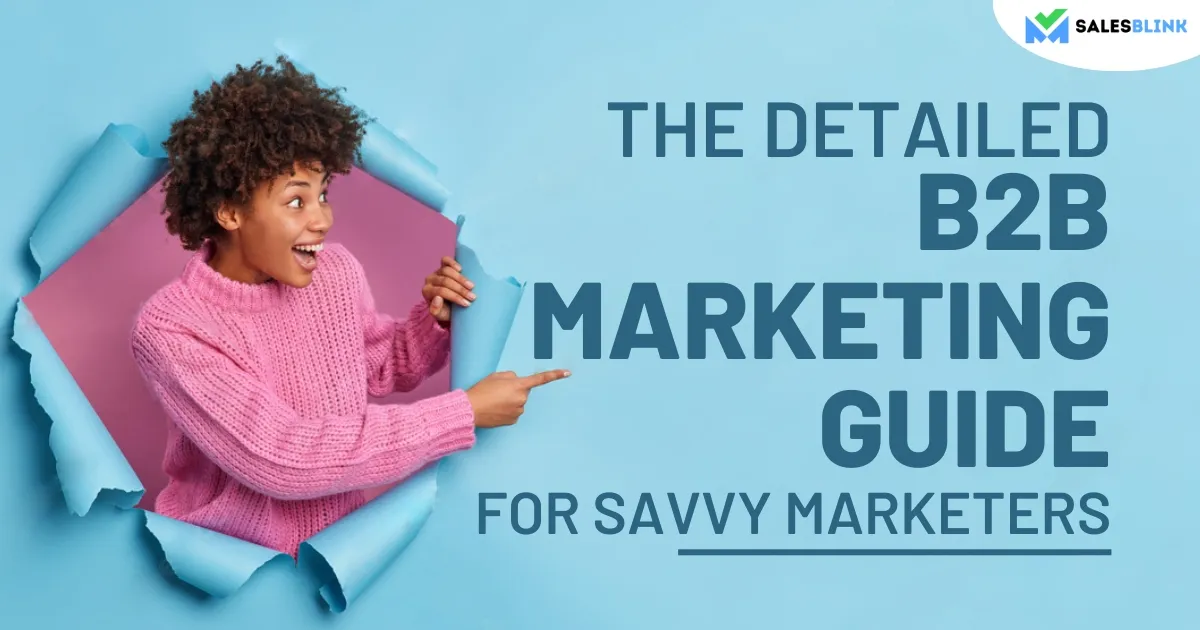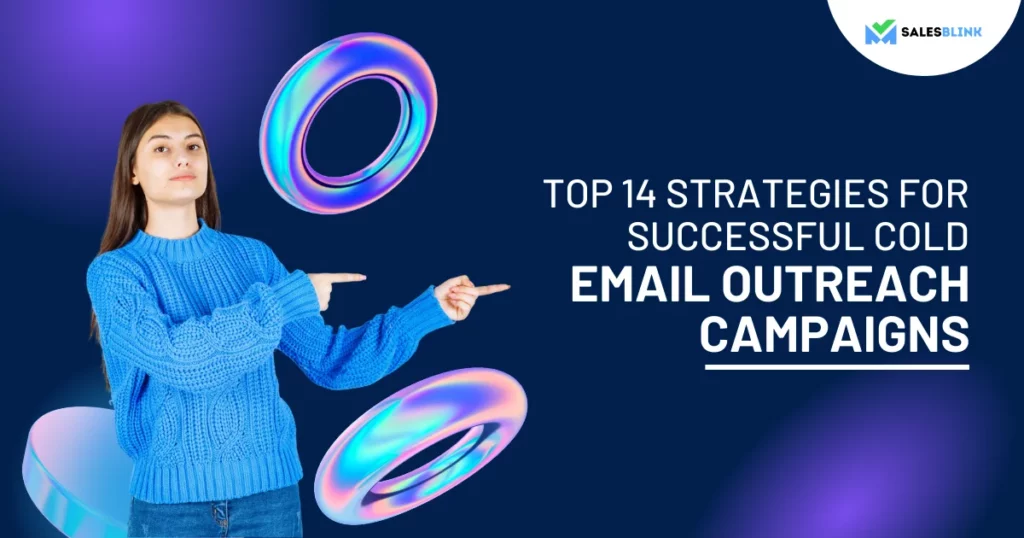The Detailed B2B Marketing Guide For Savvy Marketers
Do you know that 76% of B2B organizations have a proper marketing plan? You are missing out on something significant if you don’t have one. So, if you are looking to up your game but don’t know where to start, this guide’s for you!
This B2B marketing guide will cover everything you need to know about B2B marketing, from the basics to the more advanced concepts.
We’ll also provide plenty of practical tips and examples along the way, so you can put what you learn into action immediately.
So if you’re ready to take your B2B marketing to the next level, let’s get started!
Table of Contents
- What Is B2B Marketing?
- Benefits Of B2B Marketing
- Difference Between B2B & B2C Marketing
- Interesting B2B Marketing Stats
- What Are The Main B2B Marketing Channels?
- How B2B Marketing And Sales Work Together?
- The B2B Marketing Funnel
- How Does B2B Marketing Work?
- A Step-By-Step Guide To Build A B2B Marketing Strategy
- Key Principles of B2B Marketing
- B2B Marketing Strategies
- The Best Practices Of B2B Marketing
- Best Examples Of B2B Marketing
- What Are The Different Types Of Marketing Technology?
- Top B2B Marketing Tools
- FAQs
What Is B2B Marketing?
B2B Marketing, is a type of marketing strategy designed to help businesses promote their products and services to other businesses. This type of marketing focuses on the needs and wants of other businesses rather than individual consumers.
It stimulates demand for products or services, generates leads, and closes deals. B2B marketing is often used in industries where various factors influence purchase decisions, including availability, cost, and quality.
By creating strong relationships with existing and potential customers, businesses can create a competitive edge in the marketplace. B2B marketing can also help you build trust, credibility, and a strong brand presence. It can also help you generate leads and increase sales.
There’s a lot in store for you in this B2B marketing guide.
Benefits Of B2B Marketing
Let’s start this B2B marketing guide with the benefits it can bring to your business. They can help you maximize the potential benefits of your investments and reach new heights of success. Here are some key B2B marketing benefits:

1. Increased brand exposure
Increased brand exposure is a major benefit of B2B marketing. When businesses expand their reach by increasing their visibility, they are more likely to create more leads and generate more sales. Furthermore, higher brand exposure levels can help establish a good reputation with potential customers. It is evident that a well-known brand can attract more attention and trust than an unknown one.
2. Reach qualified leads
Qualified leads are those who are interested in the services or products offered and willing and able to purchase them. By targeting these leads, B2B marketers can save time and resources on leads that will not result in conversions.
3. Increased traffic
One of the most significant benefits of B2B marketing is increased traffic to a company’s website or social media accounts. Companies can tap into new customer networks and grow their online presence by working with other businesses. This increased online traffic can lead to more sales and higher profits over time.
4. Better relationships with customers
The ability to cultivate strong relationships with customers is a huge benefit. By engaging directly with customers, businesses can better understand their needs and tailor their services accordingly. In addition, this personal approach is more effective as customers feel more valued and appreciated. It would then lead to a conversion.
Difference Between B2B & B2C Marketing
Time to know the difference between B2B (Business-to-business) and B2C (Business-to-consumer) in this B2B marketing guide.
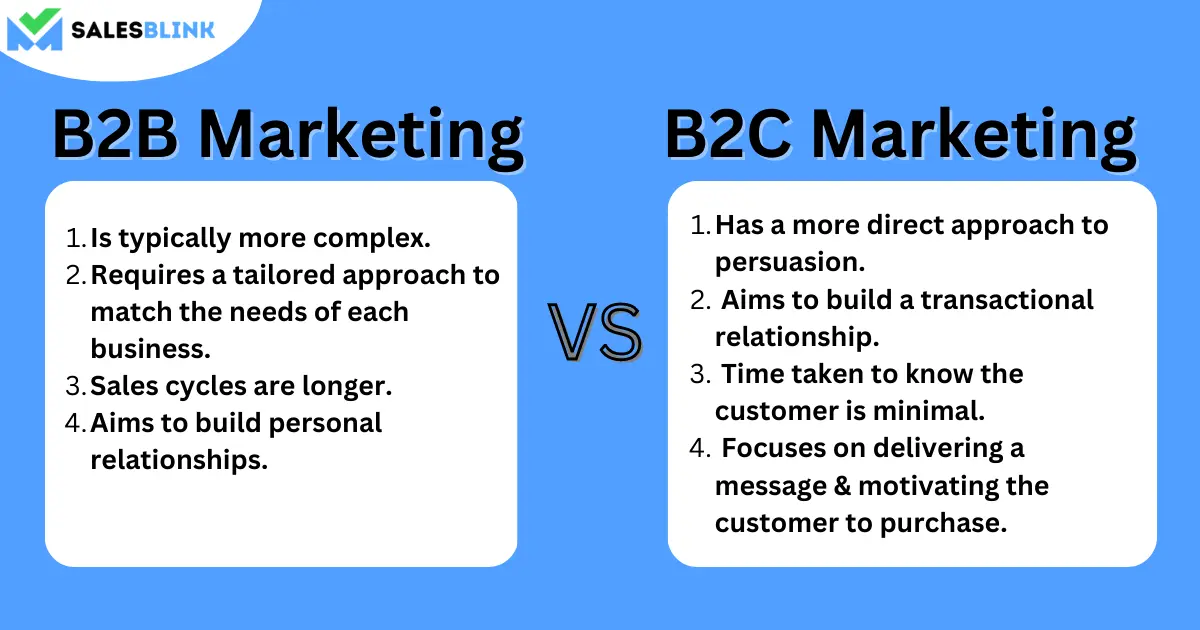
B2B Marketing
B2B marketing is typically more complex than B2C, or business-to-consumer marketing, since it involves more stakeholders, such as decision-makers, and requires more research, strategy, and negotiation.
Unlike B2C, in B2B marketing, you need to tailor your approach to the specific needs of each business. B2B sales cycles are longer due to the need for more detailed information about the product or service and the negotiation process. The aim is to build personal relationships to get long-term business, and the focus is on the positioning.
In a B2B ad copy, you must speak the same language your target audience does to close sales faster. But, again, the aim is to build confidence in the prospect about your product or service.
B2C Marketing
B2C marketing, on the other hand, is the process of marketing a company’s products and services directly to consumers. It typically takes a more direct approach to persuasion, relying on brand recognition and customer loyalty to drive sales.
The aim is to build a transactional relationship, and the time taken to know the customer is minimal here. However, there is an attempt to personalize the experience without direct communication between the business and the end customer. Instead, the focus is delivering a message, building loyalty, connecting emotionally and motivating the customer to purchase.
You must use relatable language in your ad copies that are easy to understand instead of industry jargon.
Interesting B2B Marketing Stats
It is now time to look at a few B2B marketing stats in this B2B marketing guide,
- 76% of B2B organizations have a formal marketing plan.
- 56% of B2B organizations invest in digital marketing.
- 38% of B2B companies have an in-house marketing team.
- 87% of B2B marketers use email to distribute content.
- 30% of B2B companies think that content marketing is the best way to generate leads.
- 86% of B2B marketers use content to create brand awareness.
- 68% of B2B marketers use content to nurture subscribers and leads.
- 33% of B2B organizations plan to invest in remarketing.
What Are The Main B2B Marketing Channels?
It is time to know about the main marketing channels in this B2B marketing guide that can help you get desired results. Let’s take a look at them.
1. Search engine optimization
Search engine optimization (SEO) is a powerful B2B marketing channel. SEO helps marketers increase the website visibility on search engine results pages, build credibility and trust with potential customers, and drive targeted, relevant traffic to their website.
To maximize the effectiveness of SEO, you should create optimized content for the key phrases target customers are likely to search. Ensure that it is informative, engaging, and well-crafted to appeal to potential customers. Additionally, use phrases relevant to their product or service in their website titles, meta descriptions, and on-page content. This will help improve the website’s visibility on search engine results pages.
Optimize your website for mobile use and for faster page loading times, as these are key factors for ranking higher in search engine algorithms.
You can also use link-building techniques to improve the number of inbound links to your website from other websites, which will help to improve website visibility and rankings in search engine results pages.
Overall, having a proper SEO strategy in place can help you.
2. PPC
Pay-per-click (PPC) marketing is an effective channel for driving qualified leads and conversions. It involves buying sponsored ads on search engine result pages, social media platforms, and other websites. Then, when someone clicks the ad, the advertiser pays a fee.
You can target these ads to specific audiences, allowing companies to create highly-customized campaigns that reach the right people.
When creating a PPC campaign, it’s essential to define the objectives and ensure that the ads are visible to the right audience. Try to create ads that resonate with your target audience and use effective keywords and copy to convey your message. It’s also essential to track the performance of each ad to understand which strategies are working and which aren’t.
Once the ads run, it’s time to optimize them to get the most out of the campaign. This involves testing different ad formats, adjusting bids and keywords, and fine-tuning the targeting to ensure that the campaign reaches the right people. It’s also important to monitor the campaign’s performance, making changes as needed to ensure maximum ROI.
PPC is a powerful B2B marketing channel that can help generate leads and drive conversions. With the right strategy and optimization, it can be a highly effective way to reach the right people and maximize ROI.
3. Content marketing
Content marketing is an effective inbound marketing channel. It involves creating, curating, and distributing valuable and relevant content to an audience. Content can include blog posts, articles, podcasts, videos, white papers, webinars, and more. The aim is to provide the audience with valuable information that can benefit them or help them make informed decisions.
Content marketing helps businesses build relationships with their target audience. You can establish trust and credibility with potential customers by providing helpful and relevant information. Content marketing also helps increase your visibility online, attract more leads, create brand awareness and build brand loyalty. By providing helpful and engaging content, businesses can inform customers and update them to help them make the right decisions.
If you are starting out with content marketing, you can create a blog, write about the latest trends in your industry and provide tips. It will help you become a thought leader and draw leads towards your product or service.
4. Email marketing
Email marketing is an effective B2B marketing channel. It allows businesses to stay in touch with customers, provide helpful information, and promote their services. This marketing type can help build customer loyalty and drive sales when properly executed.
To get started with email marketing, you must build an email list by collecting contact information from customers, website visitors, and existing contacts. Once you compile the list, you can craft messages tailored to the needs of your target audiences. These messages can include links to relevant content, special offers, and discounts.
You can send thoughtful, personalized emails to different segments of their list using automated email marketing tools. It is also possible to measure the success of their campaigns by tracking open and click-through rates, to make adjustments to future campaigns.
Overall, email marketing is a powerful tool for B2B businesses looking to create meaningful relationships with their customers and boost sales. Businesses can increase customer engagement and drive conversions by building a robust email list and sending tailored messages.
5. Videos
You can create and post videos on different platforms, such as YouTube, to explain complex topics or products in an engaging and visually appealing way. Moreover, videos are a great way to increase brand awareness and reach a wider audience, as they are highly shareable.
Videos offer a unique opportunity to engage potential customers in a personal way. They can create a more human connection, increasing the chances of building trust and loyalty. Also, videos are extremely versatile, and you can use them across multiple channels, from social media to email campaigns. Additionally, videos can demonstrate how products or services work in an easy-to-understand way. This can help convert leads into customers faster.
6. Social media
You can leverage the power of social media to reach a large and targeted audience. Social media has become increasingly popular with businesses and consumers alike, allowing businesses to target potential customers more effectively than other channels.
You can use it to build relationships and increase brand awareness. Social media also allows you to track your campaigns’ performance and measure your strategies’ success. In addition, social media analytics can provide valuable insights into customer behavior, enabling you to tailor marketing strategies accordingly.
In addition, social media can help you to build relationships with your customers. You can use social media to respond to customer queries, provide customer support, and build trust with your target audiences. This will help businesses foster better relationships with their customers and increase customer loyalty.
As more businesses use social media for marketing, this channel will likely continue to be a valuable asset for businesses.
Now, let’s move ahead in this B2B marketing guide.
How B2B Marketing And Sales Work Together?
B2B marketing and sales are symbiotic processes. For one to be successful, the other must be successful as well. Therefore, the marketing and sales teams must collaborate to create a tailored strategy for the target audience that works for the company. This can include a combination of digital marketing strategies such as website optimization, search engine marketing, and content marketing, as well as more traditional marketing strategies such as trade shows, direct mail, and print advertising.
B2B marketing starts by researching and defining target audiences, developing strategies to reach them, and creating campaigns that capture their attention and interest.
Once the marketing efforts have worked to create brand awareness and attract potential customers, it’s up to the sales team to nurture and convert them into customers. This includes establishing relationships with prospects, providing more information about the product or service, and ultimately working to close the deal. In addition, sales and marketing teams must maintain communication to ensure target customers are identified and acted upon promptly.
By working together, B2B marketing and sales teams can create a comprehensive strategy to increase customer engagement and loyalty. Companies can use this strategy to reach a more extensive customer base and expand their business. By understanding the needs of their target market and offering personalized solutions, companies can create a more successful customer-business relationship. This will help companies increase their revenue and grow their business.
The B2B Marketing Funnel
It is now time to know about the marketing funnel in this B2B marketing guide.
The B2B marketing funnel is a concept used to describe the journey of prospects as they move through the sales process.
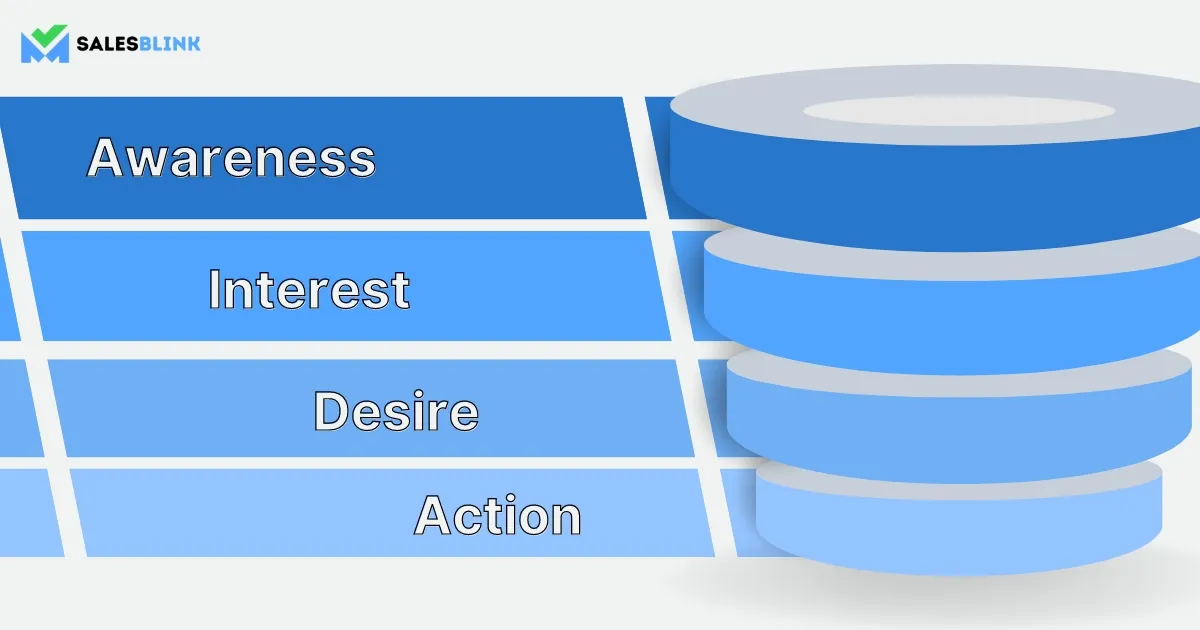
The stages of the marketing funnel are the following:
Awareness
The awareness stage of the B2B marketing funnel is the first stage of the customer journey, where potential buyers become aware of your product or service. This stage is about introducing potential buyers to your brand, showcasing the value of your products and services, and establishing trust with potential buyers.
In this stage, you should focus on creating content that resonates with your target audience and ensuring that the right people see it. This could include social media campaigns, search engine optimization, email marketing, content marketing, and more. By creating a strong presence and getting your message in front of the right people, you can build an initial awareness level for your product or service and start building relationships with potential customers.
Interest
The B2B marketing funnel’s interest stage is where potential customers are aware of your product or service and begin to show interest in it. At this stage, you as a marketer should focus on providing content that educates potential customers about your product and building relationships with potential customers.
You can do this through webinars, e-books, blog posts, and other forms of content that provide potential customers with helpful information. Additionally, you should give potential customers a way to contact you if they have any questions or want more information. By providing valuable content, you can move potential customers through to the next stage of the funnel.
Desire
The desire stage of the B2B marketing funnel is the point at which a potential customer starts to feel a need for the product or service offered. At this stage, the customer is aware of their problem and the potential solution, but they have yet to make a purchase. This is the point in the funnel where marketing efforts are focused on building awareness and convincing potential customers to take action.
Companies typically use webinars, case studies, white papers, and other forms of content to persuade potential customers to take action. The goal is to create a sense of urgency and desire in the customer, making them more likely to purchase.
Action
The action stage is the final stage of the B2B marketing funnel. It is the point at which the customer takes the action you want them to take, such as making a purchase or signing up for a service. This is where all your efforts to create awareness, build interest and drive leads finally come to fruition.
To reach this stage, you must have a clear call to action that encourages customers to take action. You should also ensure that your website or landing page is optimized to make it easy for customers to take the desired action, such as providing an easy-to-use payment system or a simple sign-up form.
Finally, it is important to track and measure the results of your efforts in the action stage so that you can adjust your strategy accordingly.
How Does B2B Marketing Work?
Let’s move ahead in this B2B marketing guide.
B2B marketing involves targeting business decision-makers, like CEOs and COOs, and other key stakeholders, such as marketing directors and research & development heads. The goal is to persuade them to purchase a company’s products or services. It requires a comprehensive understanding of the customer’s needs and desires, as well as an understanding of the company’s value proposition.
B2B marketers often use content marketing, search engine optimization, email marketing, digital advertising, and trade shows to reach business decision-makers. However, it is possible to tailor these strategies to the target market’s needs to achieve maximum impact.
With B2B marketing, businesses can develop customer relationships and brand recognition. By understanding the needs of their customers and providing value through their products or services, B2B marketers can create a positive experience for their customers that will help to build a loyal customer base.
A Step-By-Step Guide To Build A B2B Marketing Strategy
A great way to build a B2B marketing strategy is to create a roadmap outlining the steps needed to craft a successful strategy. Here is a step-by-step look in this B2B marketing guide to help get you started:
1. Perform market analysis to decide on your positioning

Market analysis is an integral part of the process, as it helps you understand the trends, competitors, and opportunities in the industry. You can do it in several ways, such as through surveys, interviews, and focus groups. Once you have gathered all the necessary information, you can start to build your marketing strategy. It would help if you focused on targeting the right customers, using the right marketing channels, and creating the right messages to reach your target audience effectively. Developing an effective pricing structure and optimizing your website for search engine visibility is also important for a successful B2B marketing strategy.
2. Understand and segment the target market
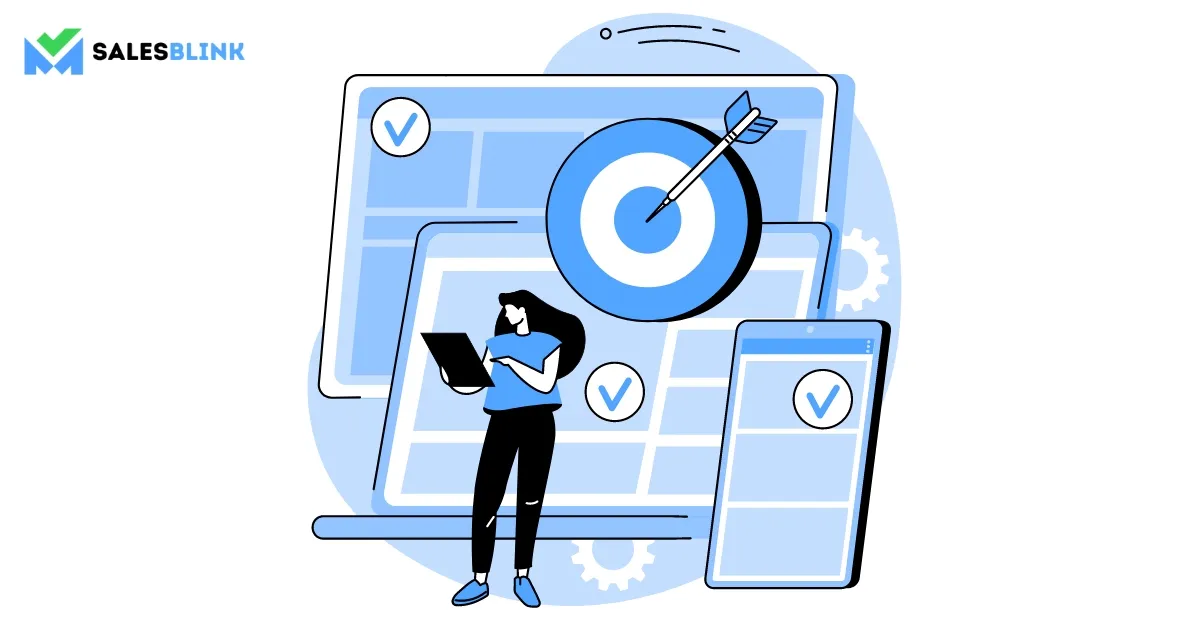
You must take into account an understanding of the target market. First, you must research your customers’ needs and consider their competitive landscape to develop a plan that will meet the needs of their customers and position their product or service effectively. Then, segment the target market into groups with similar characteristics and requirements, including industry, size, and stage in the purchasing cycle.
Knowing your target market is essential for understanding how to reach them, what message will resonate, and what marketing tactics will be most effective.
For example, a large enterprise customer may require a more complex sales approach than a small business customer, requiring different marketing tactics. Additionally, monitor and update the target market as their needs and requirements may evolve. Understanding the target market is key to success in building a successful B2B marketing strategy.
3. Identify the target audience’s buyer journey
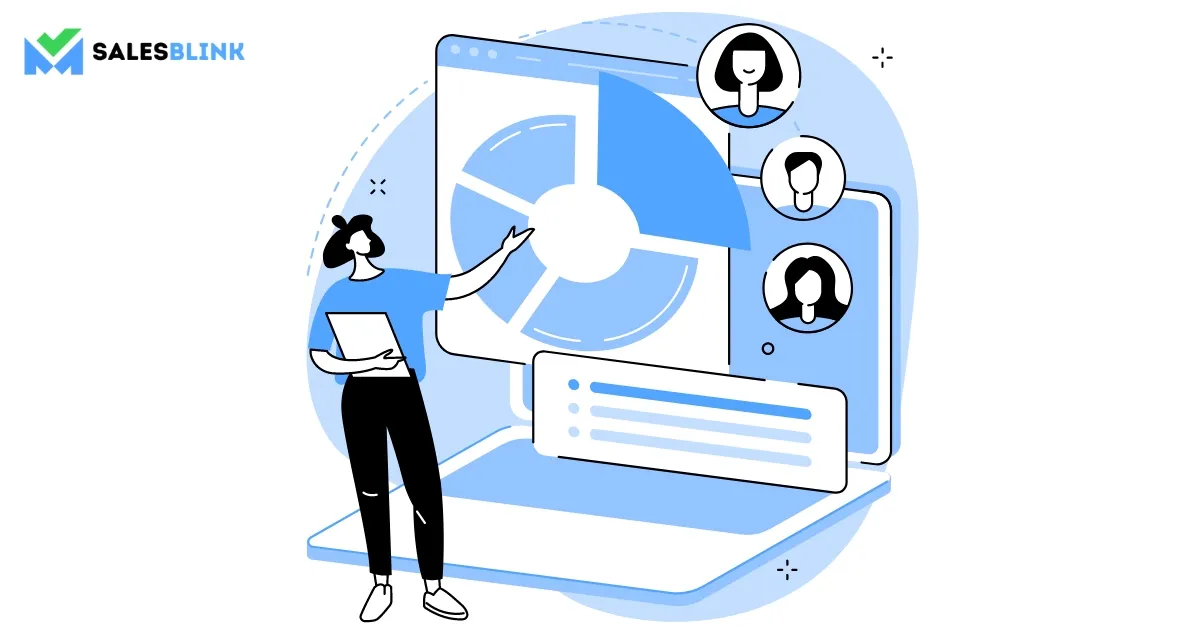
To build a strategy, you need to understand the target audience’s buyer journey.
The B2B buying journey, also known as the B2B sales process, involves six stages in the decision-making process when purchasing from another business. The stages include Awareness, Interest, Evaluation, Purchase, Retention, and Advocacy.
At the awareness stage, prospective businesses identify their needs and research potential solutions.
During the interest stage, they evaluate the solutions and decide whether to pursue them.
In the evaluation stage, the businesses assess their options and compare prices and features to determine which solution best fits their needs.
At the purchase stage, the business decides and negotiates the purchase.
The retention stage involves using the purchased product or service and determining whether it meets the business needs.
During the advocacy stage, the business evaluates its overall experience and decides whether to recommend the solution to other businesses.
The B2B buying journey is essential for businesses to make informed decisions and purchase the right solution for their needs. It helps them to assess their options, properly evaluate the product or service, and ensure that the purchase meets their expectations for long-term success.
4. Set objectives by analyzing your marketing funnel
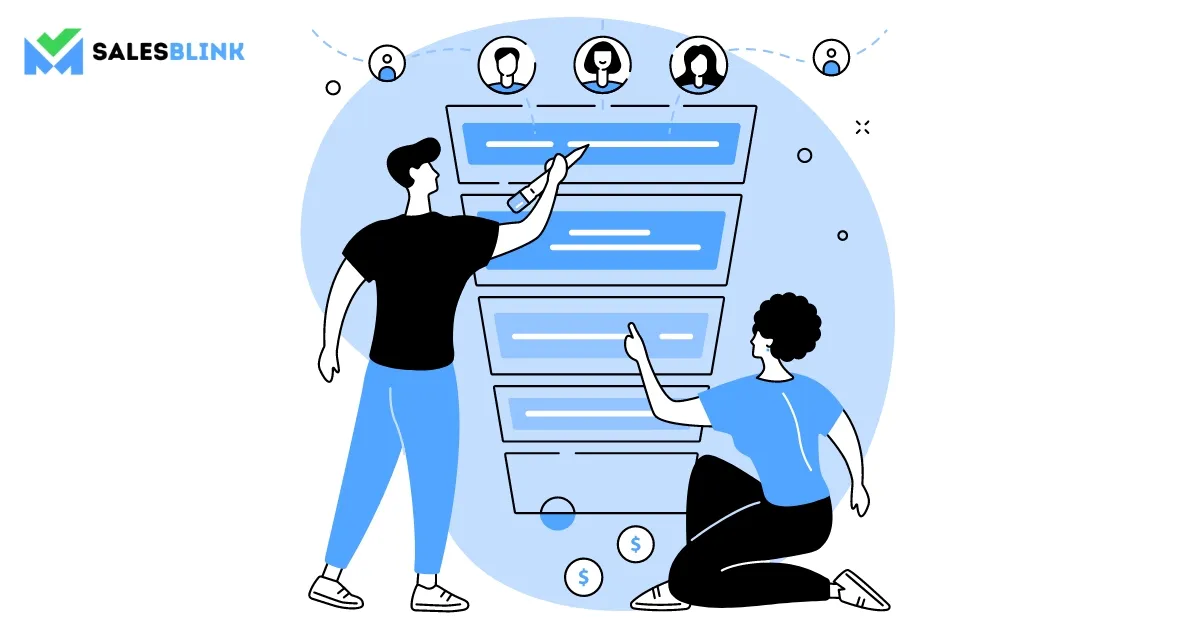
When analyzing your marketing funnel, it is essential to set objectives. The first step is identifying your target audience and the best methods for reaching them. Next, research their interests and needs and clearly define your offering. This will help you narrow down your channels and create effective messaging. Once you have a better understanding of your target audience, you can set objectives for each stage of the funnel.
For example, a top-of-the-funnel objective could be to increase brand awareness and website visits, while a middle-of-the-funnel goal could be to increase product downloads or lead generation. Finally, for the bottom of the funnel, you should focus on improving conversions and increasing customer loyalty. Setting objectives for each funnel stage will help you create a more effective marketing strategy.
5. Identify tactics to support your marketing strategy
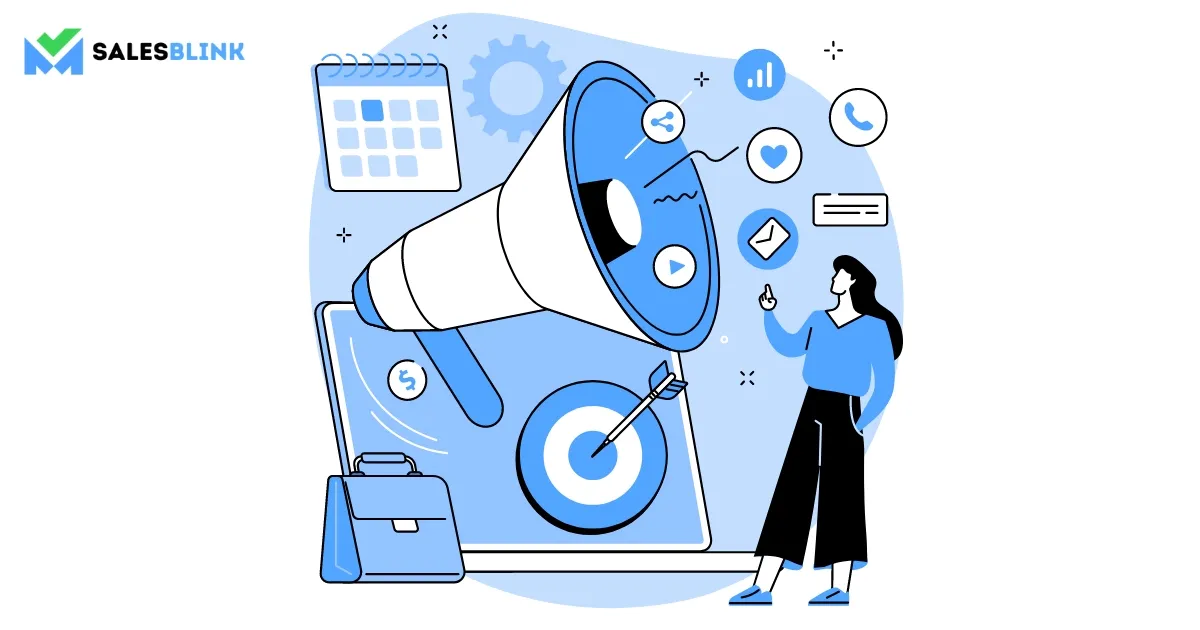
Identifying tactics to support your marketing strategy is a key component of success. A tactic is a specific action that helps you to reach your goals. Tailor tactics based on your company and the goals you intend to achieve.
For example, consider tactics like content marketing, social media campaigns, and influencer marketing to increase brand awareness. If you’re looking to boost sales, tactics might include email campaigns, PPC campaigns, and targeted display advertising.
Consider tactics like data-driven segmentation, personalization, and loyalty programs.
Whatever marketing strategy you implement, it’s essential to evaluate your tactics to ensure they’re helping you reach your goals. You should regularly review and analyze your marketing performance to ensure that your tactics are still effective. If a tactic isn’t working well, you should consider changing it or trying something new. By taking the time to identify and assess tactics that support your marketing strategy, you can ensure that your marketing efforts are successful.
With that the steps come to an end in this B2B marketing guide.
Key Principles of B2B Marketing
Having a good B2B marketing strategy in place is essential. It is time to know the main principles of marketing in this B2B marketing guide.
1. Targeting
By targeting your marketing efforts toward the right audience, you can maximize the effectiveness of your campaigns and ensure that you are reaching the right people. To do this, you need to identify your target audience and understand their needs and preferences. Once you have placed your target audience, you can create marketing messages that appeal to them and use channels and strategies to help you reach them.
2. Relevance
Relevance is key to successful B2B marketing because it helps to build trust and credibility with the target audience. When prospects feel that a company understands their needs and can solve their problems, they are more likely to consider purchasing.
3. Consistency
When a company consistently delivers on its promises, customers and potential customers are more likely to trust it. A consistent message also helps to create an identifiable brand image, making it easier for customers to recognize and remember your business. A consistent message also reinforces the idea that your company is reliable.
4. Credibility
In the business world, decisions are made based on facts and evidence. Customers want to know that they can trust the products and services they are buying, which means that you must be able to back up your claims with facts. Demonstrating credibility through accurate and honest messaging can build trust with your customers and prove that your products and services are worth investing in.
5. Clarity
When you are clear about what you are offering and why it is valuable, it is easier for potential customers to understand your product or service and why they should invest in it. Clarity also ensures that your message is not lost in the marketplace noise.
6. Frequency
When businesses engage in frequent communication with their target audiences, they are better able to build trust and keep their brand top of mind. This is important because B2B customers often take longer to make decisions and need more nurturing than B2C customers.
7. Quality
The marketing campaign should be high quality as it directly reflects your business. Trying to keep the expenses low by opting for cheaper options can affect your sales in the long run, and you wouldn’t want that to happen, right?
B2B Marketing Strategies
It is now time to look at the top strategies in this B2B marketing guide.
1. Understand your brand positioning
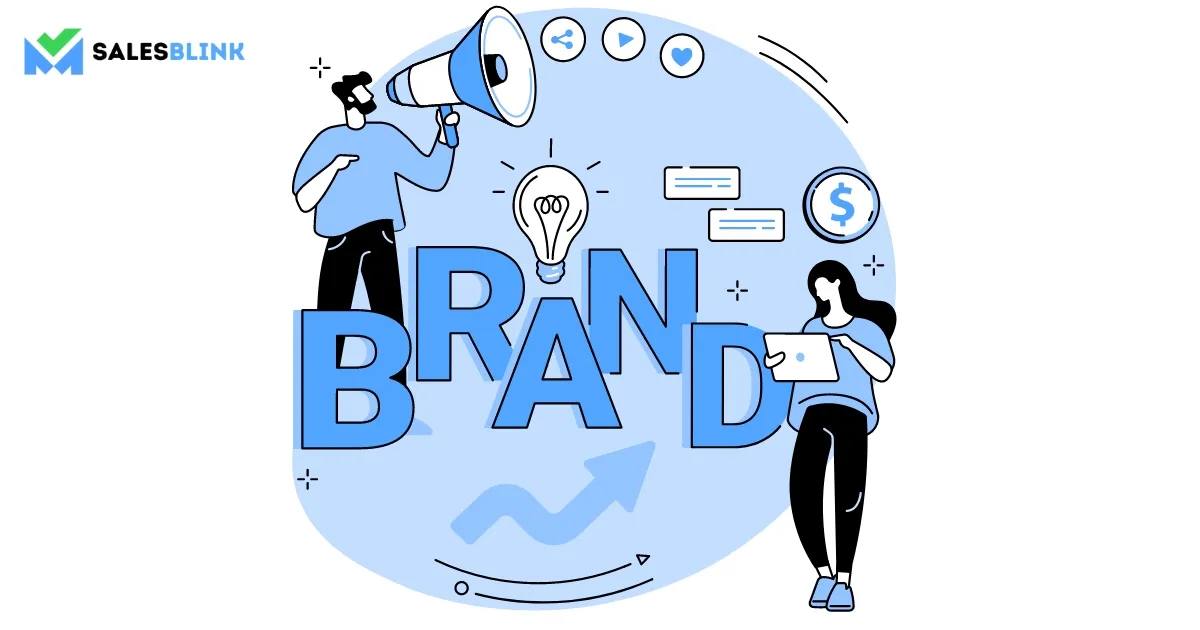
When it comes to B2B marketing, understanding your brand positioning is essential for success. Your brand positioning is the unique place in the market that you occupy and how customers perceive you. It should be based on your unique selling proposition, the benefit you offer customers that sets you apart from other businesses. Your brand positioning should also reflect in your marketing materials, from your website to your social media posts.
To understand your brand positioning, you need to know who your target customers are, what they are looking for, and how you can meet their needs better than any other business. Once you understand your positioning, you can create a compelling message that resonates with your target customers and drives them to purchase from you.
2. Know your target audience
Knowing your target audience is important to succeed in B2B marketing. For that, start by researching the industry your target market is in and getting to know its trends and challenges. It would help if you also looked into the demographics of your target market, such as their age, gender, location, and interests. Once you better understand who your target audience is, you can create tailored messaging that speaks directly to their needs. This will ensure that your B2B marketing efforts are successful.
3. Study competitors

When it comes to B2B marketing, studying your competitors is essential to success. Knowing what other businesses in your industry are doing can help you craft a more effective strategy and stay ahead of the competition. Here are a few tips for studying your competitors:
– Analyze their website and social media presence. Look at the content they post, their design, and the type of engagement they are getting.
– Check out their reviews and ratings on their website and external sites.
– Look at their pricing structure and compare it to yours.
– Analyze the products and services they offer, and consider what you can do differently.
– Research their customer base and see if you can target similar customers.
By studying your competitors, you can gain valuable insight into what works and what doesn’t. This knowledge can help you craft a more successful strategy and stay one step ahead of the competition.
4. Explore different marketing channels
Exploring different B2B marketing channels is a great way to reach potential customers. An excellent place to start is by researching which channels your competitors are using and assessing the results. It’s also important to consider the needs of your target audience and identify the channels most appropriate for your product or service.
Social media is a great way to reach potential customers and can advertise products and services, collect user feedback, and build relationships.
Other marketing channels include email campaigns, search engine optimization, and print advertising.
Whichever channels you decide to explore, it’s essential to create a strategy that includes goals, a timeline, and analytics to measure the success of your campaigns.
With the right approach, B2B marketing channels can be a great way to build brand awareness and reach potential customers.
5. Focus on millennials
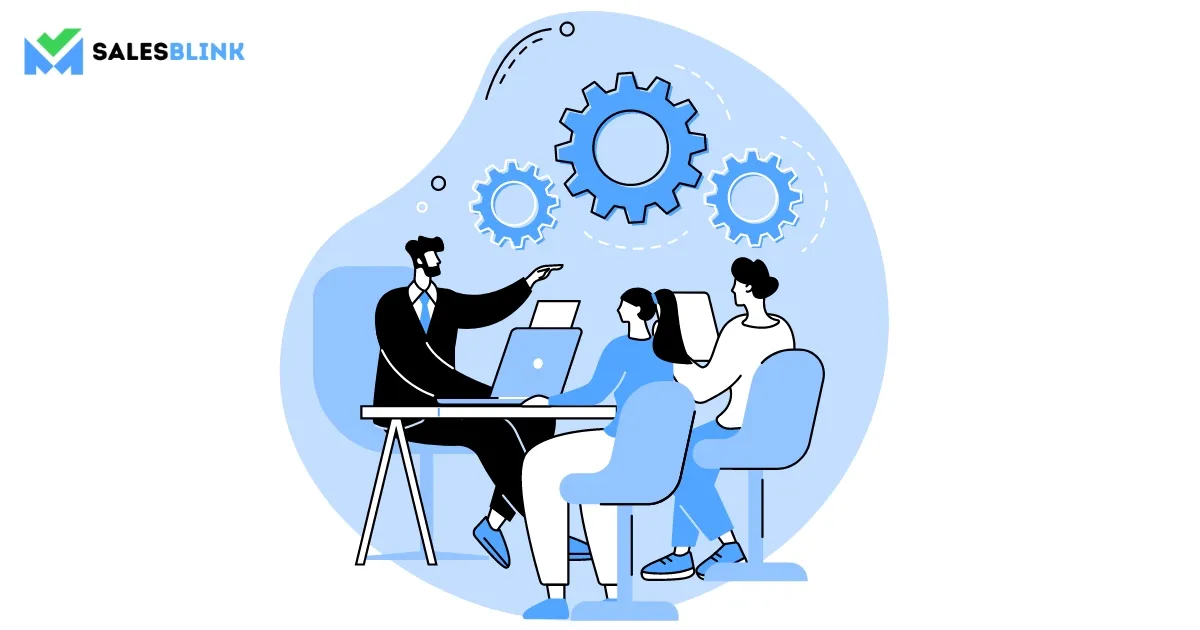
Millennials have become an increasingly important demographic for marketers in the B2B space. As millennials move into positions of power in the business world, their purchasing decisions have become more influential. To reach this growing demographic, you need to adjust your strategies to focus on the needs and interests of millennials. This may include using more modern digital marketing techniques such as social media, video marketing, and paid search.
It would help if you also used language that resonates with millennials, emphasizing sustainability and ethical business practices. By taking the time to understand what appeals to millennials and tailoring their messaging to this demographic, you can reach a larger audience and drive more sales.
6. Make use of automation and AI
Automation and AI are changing the way you do marketing. Using these tools, you can increase your efficiency and reach a larger audience with less effort.
For example, you can use automation tools to send personalized emails, schedule posts on social media, and automate lead generation. In addition, you can use AI to analyze data, predict customer behavior, and recommend content or products that customers may be interested in.
Using automation and AI in B2B marketing enables marketers to focus their time on higher-value tasks such as developing strategies. Additionally, these tools give marketers insights into their customers’ preferences and behaviors. This allows them to personalize their marketing messages and tailor them to their target audience.
Overall, automation and AI are invaluable tools for all B2B marketers. You can save time and money by leveraging these technologies, reach more customers, and create more effective and tailored campaigns.
7. Leverage SEO
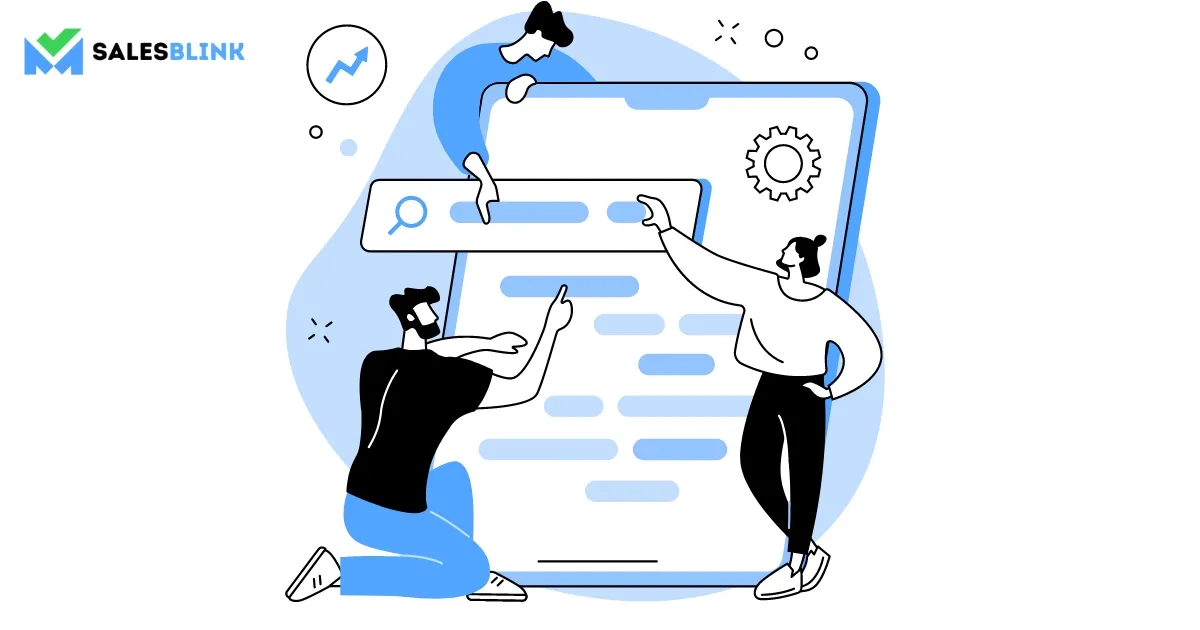
Search engine optimization (SEO) is essential to B2B marketing success. By using the right keywords and optimizing content, you can ensure that potential customers see your website. Try to focus on long-tail keywords relevant to your industry and the target audience.
Also, consider utilizing link-building strategies to increase search engine rankings. Finally, ensure your website has high-quality content, including blogs, white papers, and infographics, as quality content can help capture customers’ attention. By leveraging SEO in your B2B marketing strategies, you can gain visibility, attract potential customers, and boost sales.
8. Make use of emotions in your ads
Using emotions in marketing can effectively generate leads and close sales. In addition, emotions can help create an emotional connection between your brand and its potential customers, making them more likely to remember your brand and purchase from you in the future.
Emotional ads can also make a company stand out from its competitors. It has shown that people tend to remember emotionally-charged ads more than those solely informational ones.
Additionally, using emotions in ads can make you appear more human and authentic, thus helping to build trust between you and your customers. It can increase the chances of success as customers will be more likely to remember your brand, engage with the ads, and ultimately purchase the company’s products or services.
9. Utilize social media
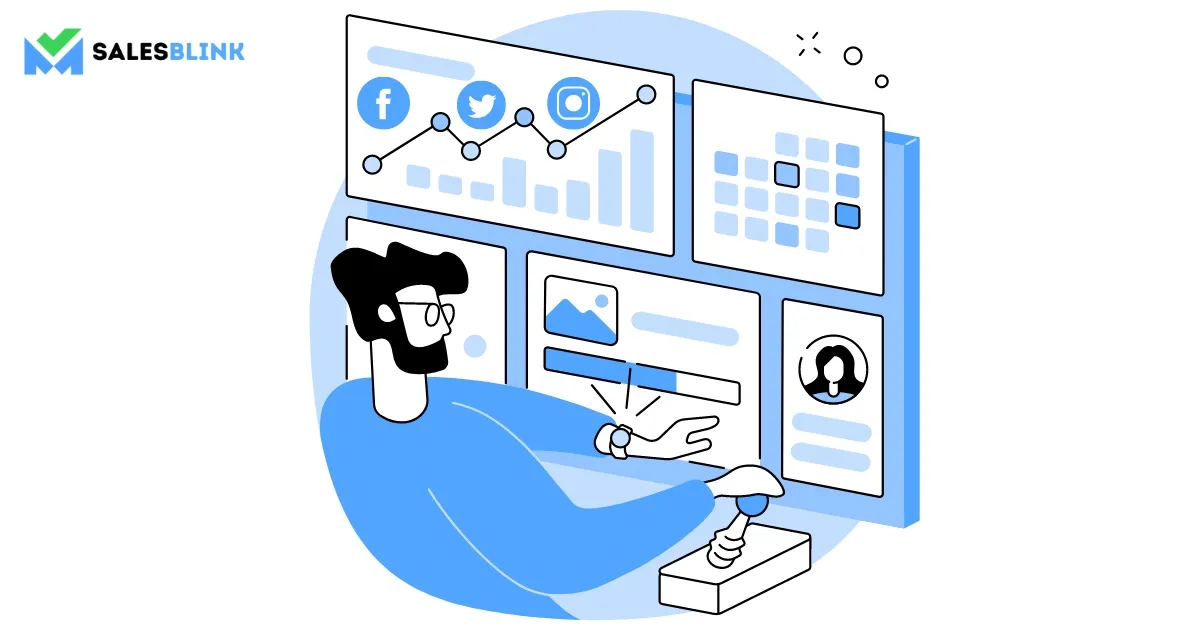
Social media platforms provide a valuable avenue for connecting with potential customers and building relationships.
To use social media effectively in B2B marketing, you have to understand the unique needs of your target audience and tailor your content to meet those needs. This could include providing educational content, sharing industry news, and creating valuable resources.
It’s also essential to establish a consistent presence across different channels and be sure to engage with your followers. Building relationships through social media isn’t just about pushing out content; it’s about having meaningful conversations and responding to customer inquiries. Finally, use analytics to track and measure the effectiveness of your social media efforts. This can help you determine which strategies are working and which you must refine.
10. Run email campaigns
Email campaigns are an important part of any B2B marketing strategy. Running successful campaigns requires a clear understanding of your target audience and the ability to craft effective messages that will resonate with them. Here are a few tips for running successful email campaigns in B2B marketing:
- Get to know your target audience: Research their interests, needs, and pain points to create meaningful content.
- Create an engaging email list: Invite prospects and customers to join your list and ensure that you have their permission to contact them.
- Craft clear, concise messages: Make sure your messages are relevant and crafted to stand out in your subscribers’ inboxes.
- Test, measure, and refine: Test different messages and analyze the results to see what works best. Then refine your campaigns to maximize their effectiveness.
By following the above, you can create effective email campaigns to help you reach your marketing goals.
It is time to move forward in this B2B marketing guide.
The Best Practices Of B2B Marketing
Let’s take a look at some of the best practices to follow in this B2B marketing guide. It can help you generate maximum leads effortlessly.
1. Use automated marketing tools
Automated marketing tools can be a great way to simplify and enhance your B2B marketing efforts. Moreover, in the post-pandemic world, marketing has become purely digital. Therefore, it is best to turn to automation as it allows you to target specific customers and customize your messages to their needs.
It can also help you save time by automating tedious tasks like scheduling emails, creating landing pages, and tracking customer data.
Using tools can free up valuable resources that you can use to focus on more creative and strategic marketing initiatives. Additionally, automated tools can help you increase conversions and drive ROI by providing personalized experiences for your customers. By using automated marketing tools, you can ensure that your marketing efforts are more efficient, effective, and tailored to the needs of your B2B customers.
2. Personalize
Personalization has become a significant factor in successful B2B marketing. By personalizing content and communications, B2B marketers can better target their audience and outshine competitors. In addition, personalization helps create an engaging experience for customers by tailoring content to the specific needs of their business. This helps build customer trust and encourages them to purchase from the company.
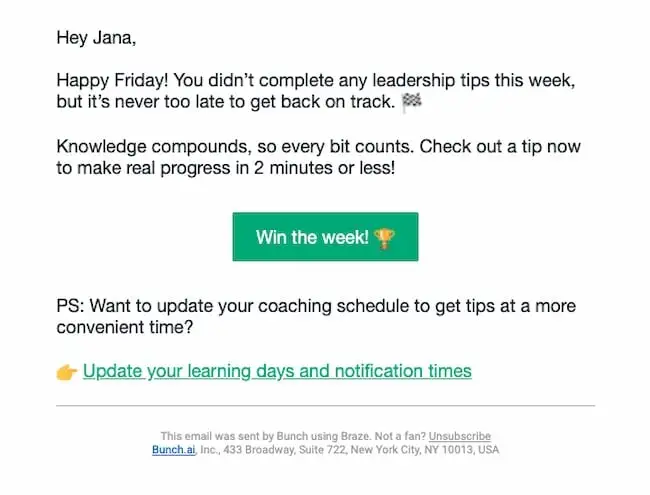
Personalization has become so important that many companies now utilize AI to help create customized experiences. AI-driven personalization allows marketers to use data to create highly tailored content that resonates with customers.
AI-driven personalization can improve customer engagement and increase customer lifetime value by ensuring that you provide each customer with specifically tailored content. As a result, it can drive greater customer loyalty, engagement, and sales.
3. Make the most of special occasions and events around you
Special occasions and events are an excellent opportunity to reach customers and build relationships. In addition, they provide an opportunity to offer customers something unique. For example, businesses can offer discounts on products or services for a limited time during the festive season. This helps to increase sales, as customers will be more likely to take advantage of the opportunity.
You can build your reputation as a reliable and trustworthy business by taking advantage of special occasions and events. Special occasions and events also help businesses to stay current and relevant, as customers will be more likely to interact with a brand that’s keeping up with the times.
4. Align marketing and sales teams
Aligning marketing and sales teams is essential for the success of any organization. Collaboration between the two departments ensures that you meet goals and that strategies work. Also, aligning the teams can develop and implement strategies to maximize their efforts, leading to a successful outcome.
Additionally, it helps to ensure that you utilize resources in the most effective way possible. Alignment between marketing and sales teams also creates a greater understanding of the target audience and their needs – allowing each team to focus their efforts on the same goals. You can use this understanding to create more effective strategies with an experience of the buyer’s journey.
It is possible to bridge the gap between both teams and ensure everyone is on the same page. When done properly, it can create a greater sense of collaboration and trust – while also increasing the effectiveness of campaigns and strategies.
With this we come to an end of the best practices in this B2B marketing guide.
Best Examples Of B2B Marketing
It is time to look at a few examples in this B2B marketing guide.
1. B2B Social Media Campaign
When you are targeting B2B leaves on social media, LinkedIn is the best option for you. It is a vast professional network with millions of users worldwide. Content that will work well on LinkedIn differs from other platforms like Tiktok, where the approach varies. With LinkedIn, the aim is to help people grow in their careers. So, the best way out is to provide helpful information they can implement at work. You can do the same for Instagram as well. At Semrush, the teams know that the target audience wants to know as much about SEO as possible. So, they primarily make interesting infographics so that people can get bite-sized informative content and share it with others easily. You can also try this out, create engaging infographics for your audience, and post them on LinkedIn or Instagram.
Here’s what Semrush’s post on Instagram looks like,
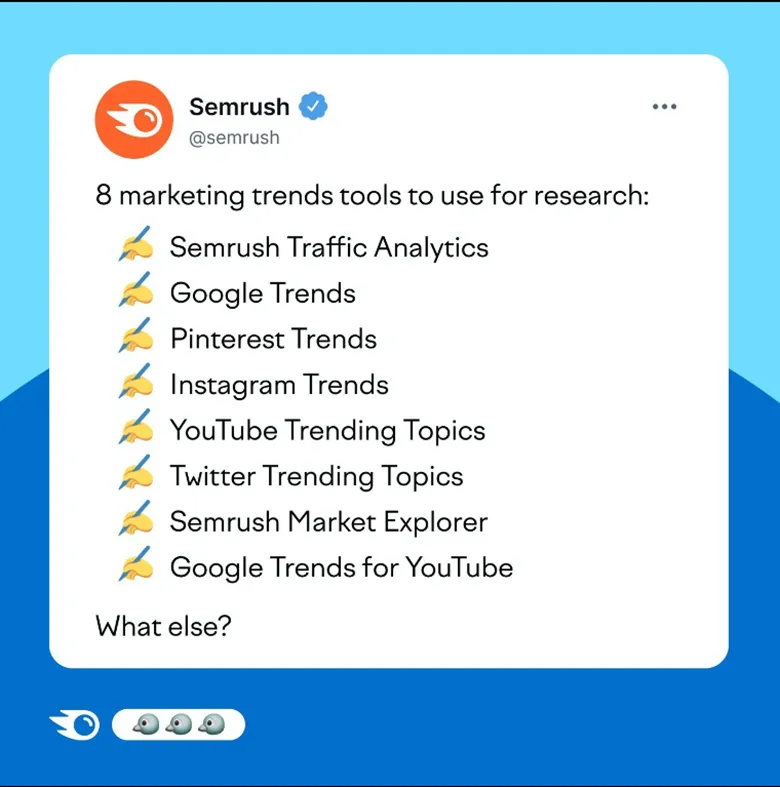
2. Email Marketing Campaign
Including email marketing in your strategy is a must because, even today, using email for marketing can get you an ROI of 122%. First, however, you have to put in the effort to make your email stand out. Generic emails will not be able to get the target audience to read what you have to say.
Here’s Buffer’s welcome email that the user receives after signing up. In the email, Buffer says they are always available to reply to their users and willing to help.
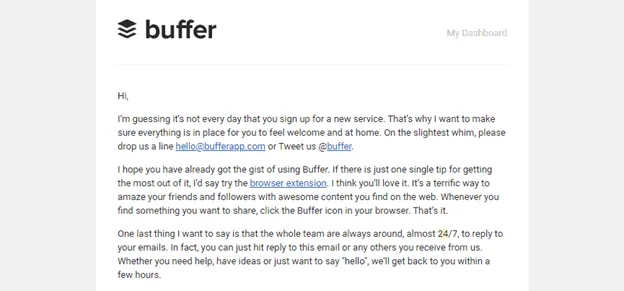
3. B2B video marketing campaign
B2B marketing need not be boring every time. You can add creativity and color to it to make it stand out. Videos are the most in thing these days and the target audience is more likely to consume them than any other marketing formats.
Here’s a video created by Slack, the famous communication platform for offices that has loads of humor in it. The video is one of a kind as it shows that B2B need not be bland and serious all the time. You can add elements that make it hilarious too.
With this we come to the end of examples in this B2B marketing guide.
What Are The Different Types Of Marketing Technology?
There are different types of marketing technology to achieve different B2B marketing objectives. With so many kinds of marketing technology available, it can be challenging to know which products are right for your business. To help you make the right decision, we’ve put together a list in this B2B marketing guide to help you out.
1. Advertising
Advertising technology can help businesses advertise their products or services, track the performance of campaigns, analyze data, and optimize results. It helps marketers create targeted campaigns and measure the success of their efforts. You can also use it to create more personalized experiences for customers. Additionally, it allows marketers to test different advertising approaches, such as A/B testing, to determine which approach works best for their brand.
2. Social media
Social media marketing technology helps you post on social media platforms, respond to messages and manage accounts. It also allows you to track real-time metrics, allowing you to make data-driven decisions. As a result, social media technology has revolutionized digital marketing, allowing companies to create more personal and engaging campaigns tailored to their target audience.
3. CRM
CRM marketing technology is a powerful tool for businesses to improve customer service and increase sales. By tracking customer data, businesses can predict customer behavior and create targeted marketing campaigns tailored to their individual needs.
CRM technology also helps businesses build customer relationships by providing personalized communications, such as automated emails with personalized content. This helps to increase customer engagement, loyalty, and satisfaction.
Furthermore, CRM marketing technology provides businesses valuable insights into customer segmentation, buying behavior, and competitor analysis.
4. Content management
Content management tools for marketing are essential for any successful business. They allow you to plan, create, organize, and distribute content efficiently and cost-effectively. You can use content management tools to track customer interactions, capture leads, and measure the success of marketing campaigns. They can also help you optimize your content for search engine rankings and target specific audiences. You can also use them to quickly identify the best channels to distribute your content, saving you time and money.
5. Content creation
Content creation tools are a great way to create content for marketing purposes. These tools make it easy to create engaging content, from videos to articles, that you can use to promote a product or service. In addition, a content creation tool will allow users to customize the look and feel of the content to meet their specific needs. Content creation tools also make it easier to repurpose content, like converting a blog post into a video or an infographic into an article. With a content creation tool, you can save time, resources, and money while creating high-quality content that will help promote their products or services.
6. Analytics
Analytics tools for marketing are becoming increasingly popular as businesses look to stay competitive in the ever-changing digital landscape. These tools can help businesses track web traffic, analyze user behavior and engagement, measure the effectiveness of campaigns, and monitor customer sentiment. With the right tools, companies can better target their campaigns and optimize their content to maximize ROI. In addition, you can use analytics tools to segment audiences, identify trends and recognize patterns, track conversions and revenue, and uncover growth opportunities.
7. SEO
SEO tools are a valuable resource for online marketers. They allow you to track and measure key performance indicators such as keyword rankings, website traffic, and backlink growth. These tools make it easy to monitor your SEO performance and identify areas for improvement or optimization. Additionally, they can help you uncover new opportunities to increase visibility and reach new audiences.
Common SEO tools include keyword research, backlink, and competitor analysis tools. With the right SEO tool in place, you can save work hours and ensure you make the best use of your time and resources. Utilizing SEO tools can help you maximize your success and gain a competitive edge.
8. Email marketing
Email marketing tools are essential for organizations wanting to reach more customers, increase brand awareness, and grow their business. These tools facilitate creating and sending emails to potential and existing customers. They also allow users to track the performance of their emails and campaigns, enabling them to make necessary adjustments to improve their results. Email marketing tools also automate processes like collecting contacts, segmenting them into groups, and scheduling emails.
9. Customer Experience software
Customer experience software helps companies track customer engagement, preferences, and behaviors to measure performance and identify areas for improvement. You can also use CX software to create surveys, analyze customer insights and improve customer service.
Wait there’s more in this B2B marketing guide.
Top B2B Marketing Tools
You now have an idea of the types of tools used in marketing. Let’s look at the most popular tools in this B2B marketing guide so that you can pick the right ones for your marketing needs.
1. Lead Generation and Nurturing Tools
a. Lead Feeder
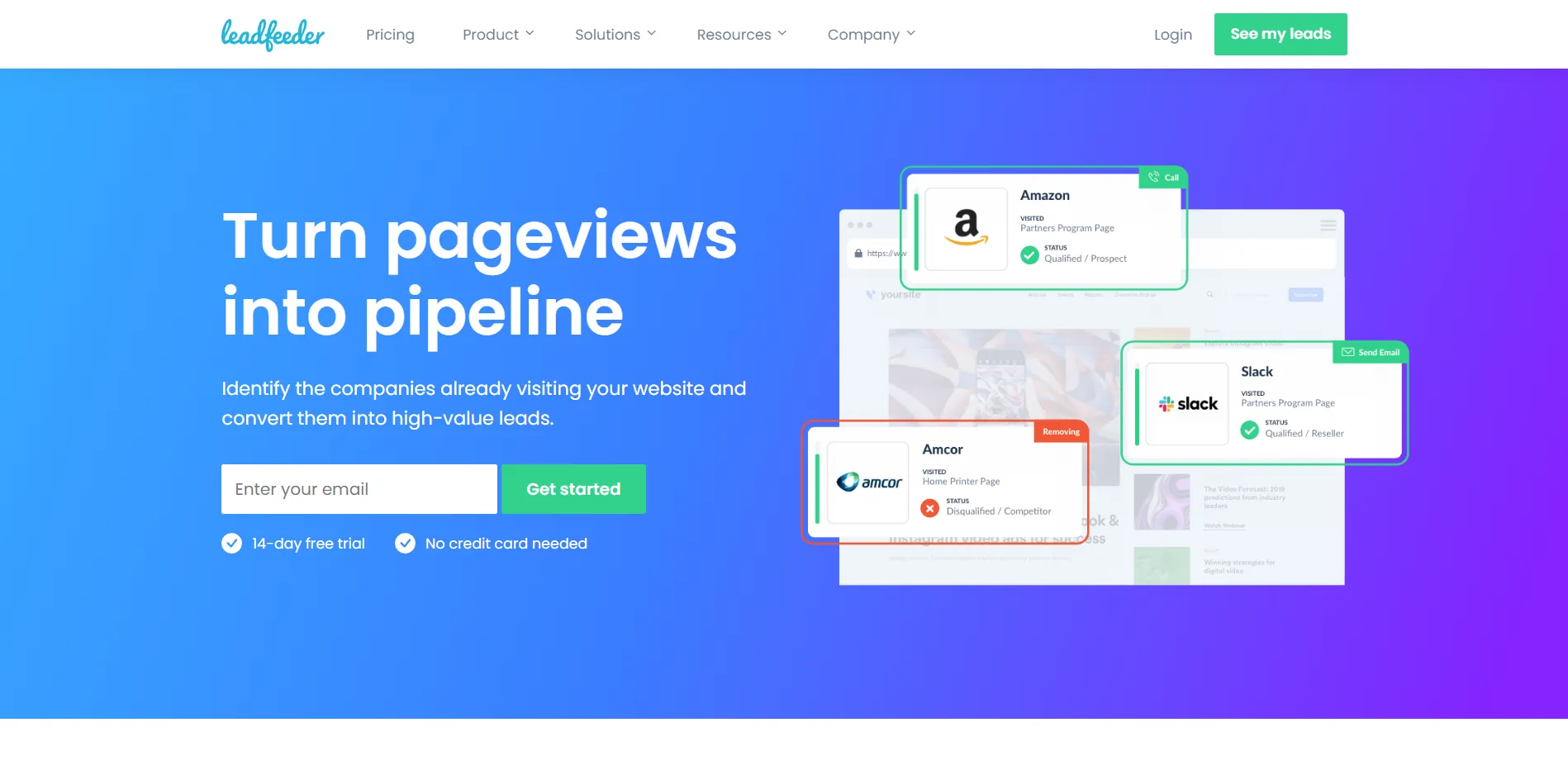
Leadfeeder is an online lead-generation tool designed to help businesses find high-quality leads. It works by tracking website visitors and analyzing their online behavior. You can use this information to create an in-depth profile of each lead. Then, the tool qualifies leads, and you can target the ones with the highest potential using personalized offers or content. The platform also integrates with various marketing software, allowing users to segment leads quickly into different customer lists and funnel them through the sales process.
b. Leadpages
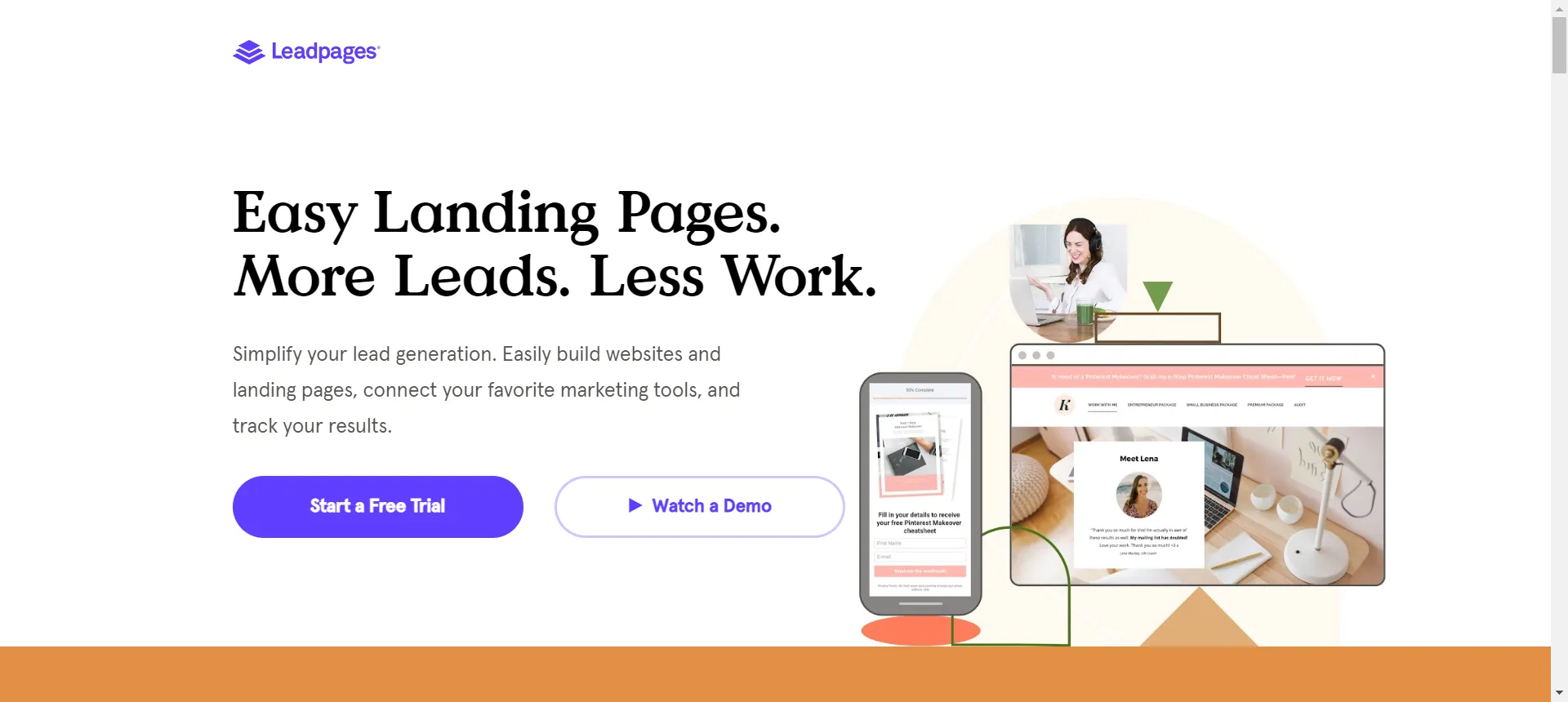
Leadpages is an online lead-generating tool designed to help capture more leads, convert customers, and grow their business. It offers a range of features such as landing pages, pop-ups, and opt-in forms, to help businesses attract visitors and turn them into leads. Leadpages also provides an analytics dashboard so you can track your lead generation progress. Additionally, Leadpages integrates with various marketing tools to help you increase your reach and generate more leads. With Leadpages, businesses can quickly and easily create effective lead-generation campaigns to help them attract more leads and customers.
2. Email Marketing Software
a. Active Campaign
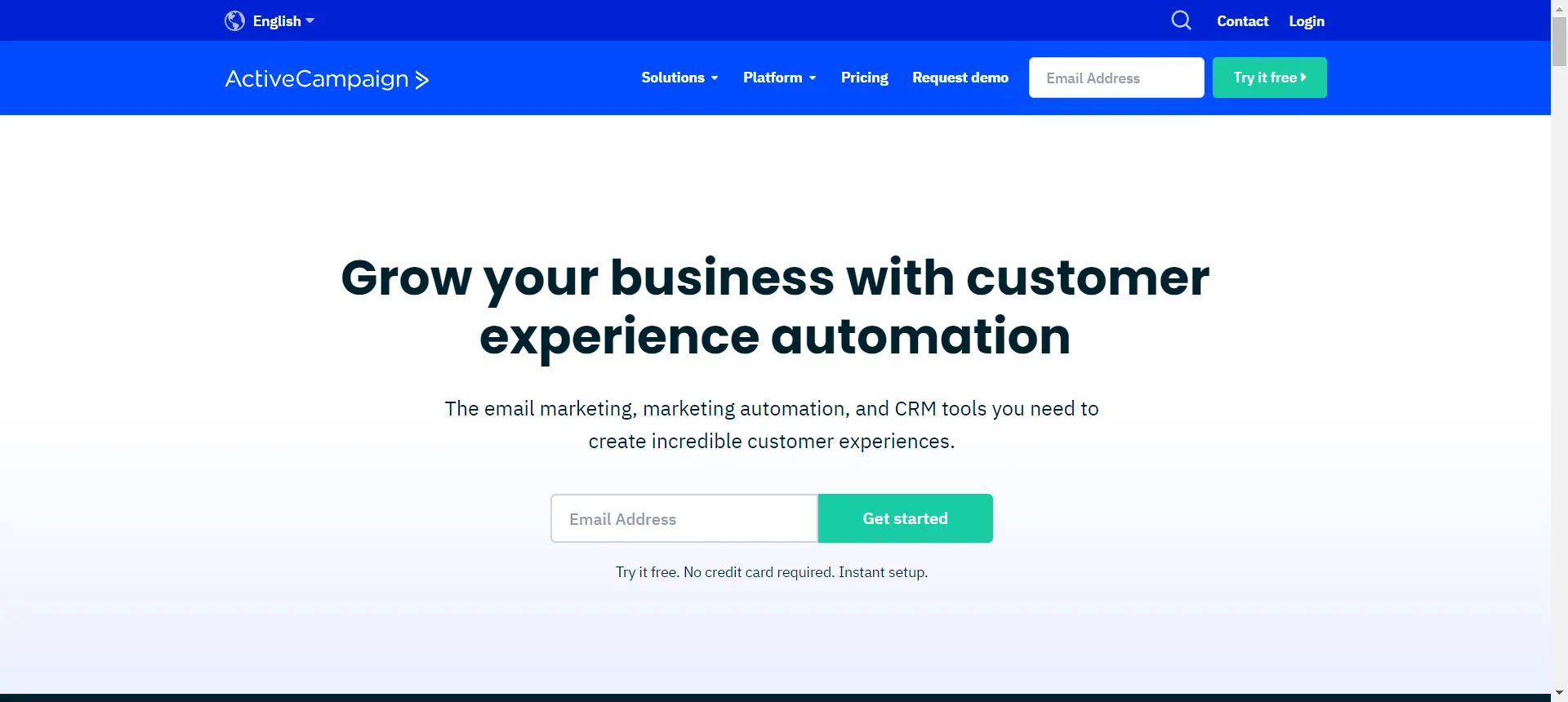
Active Campaign helps businesses and organizations send targeted, personalized emails to customers. It is easy to use and has many features, including automation, tagging, segmentation, and more. Active Campaign allows you to create targeted campaigns that send emails based on customer behavior and preferences. This will enable you to reach a larger audience with personalized content, increasing engagement and conversions. Additionally, Active Campaign integrates with many third-party tools. Also, it is easy to track the success of your campaigns and optimize them for maximum success. With its powerful features and integrations, Active Campaign is an excellent tool for any business looking to use email marketing to reach its customers.
b. Customer.io

Customer.io is an email marketing software platform designed to help businesses build better customer relationships. It provides an easy-to-use interface for creating personalized emails tailored to each customer. With Customer.io, you can create automated emails based on customer behavior and send them at the right time. You can also segment customers into groups and send campaigns to each. Additionally, Customer.io provides detailed analytics so you can track customer engagement and make informed decisions about your email campaigns. Overall, Customer.io is an effective and efficient way to create targeted email campaigns and increase customer engagement.
3. Content Marketing and SEO
a. Ahrefs
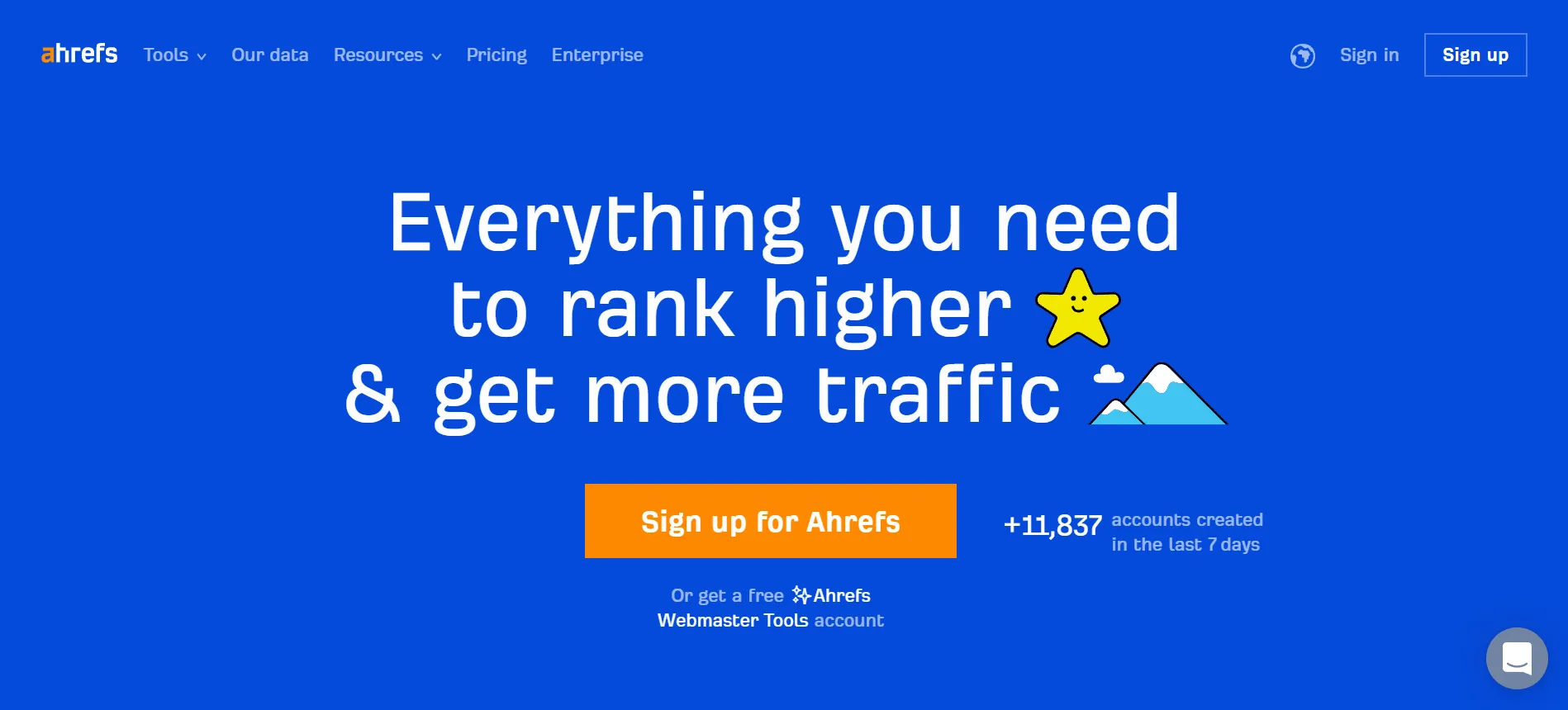
Ahrefs is a comprehensive SEO tool that helps users optimize their websites for higher search rankings. It provides a range of features, such as keyword research, link analysis, and competitor analysis.
For keyword research, Ahrefs provides organic and paid keyword data, allowing users to identify the most profitable keywords to target. In addition, link analysis feature enables users to discover high-quality backlinks and opportunities to improve their link profile.
Ahrefs also offers a range of competitor analysis tools, including an overview of your competitors’ backlink profiles and top-performing content.
Finally, Ahrefs offers a range of other features, such as crawler reports, rank tracking, and technical SEO audit tools. Overall, Ahrefs is a potent SEO tool that can help users improve their search rankings and maximize their online visibility.
b. BuzzSumo
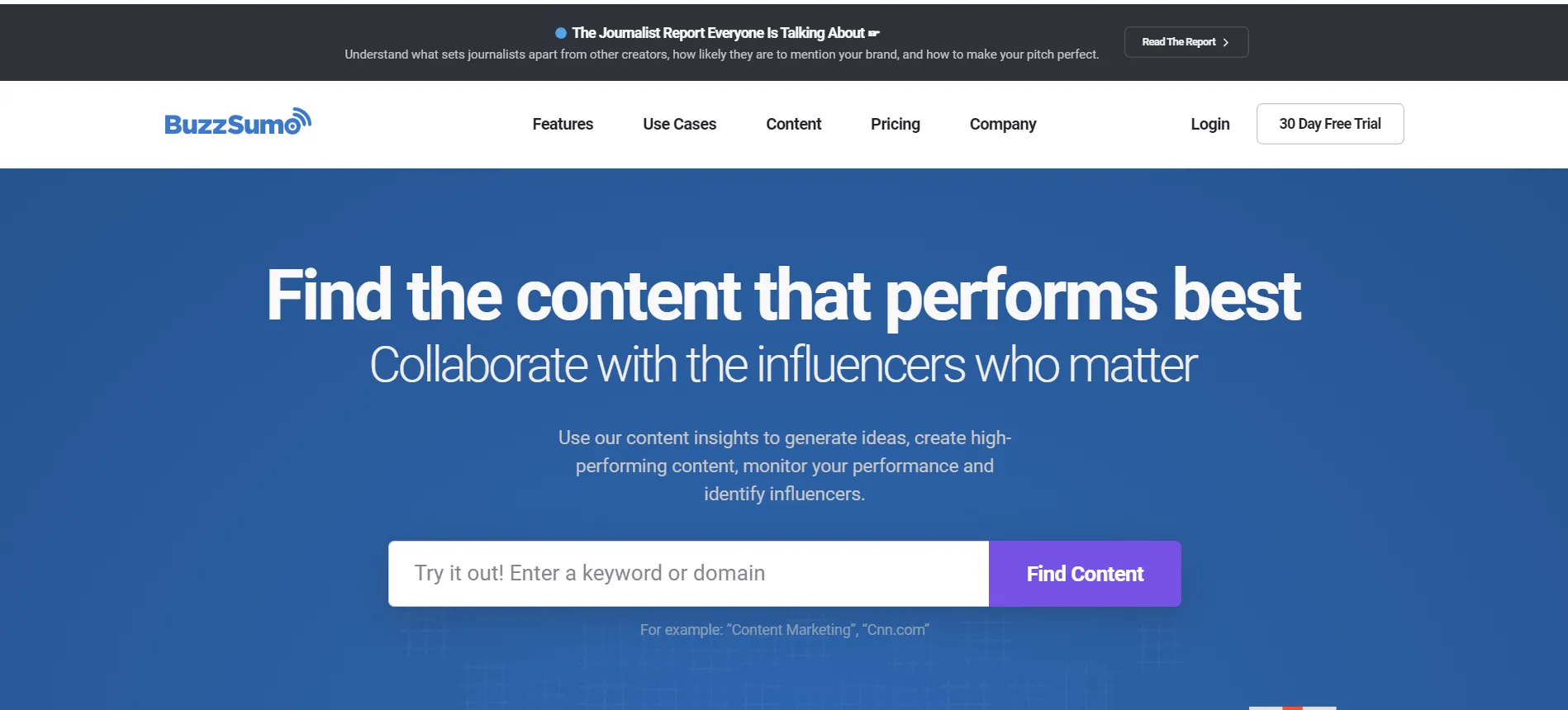
Buzzsumo is a content marketing platform that helps content creators, marketers, and researchers discover the most popular content on the web. It uses advanced algorithms to analyze millions of articles, videos, and other content from around the web. It provides insights into what content is most effective at engaging audiences. With Buzzsumo, users can search for content by keyword or topic and check out metrics such as social share numbers, backlinks, and more. Overall, Buzzsumo works for anyone looking to understand the online landscape better and create content that resonates with their target audience.
4. Marketing Automation Tools
a. HubSpot
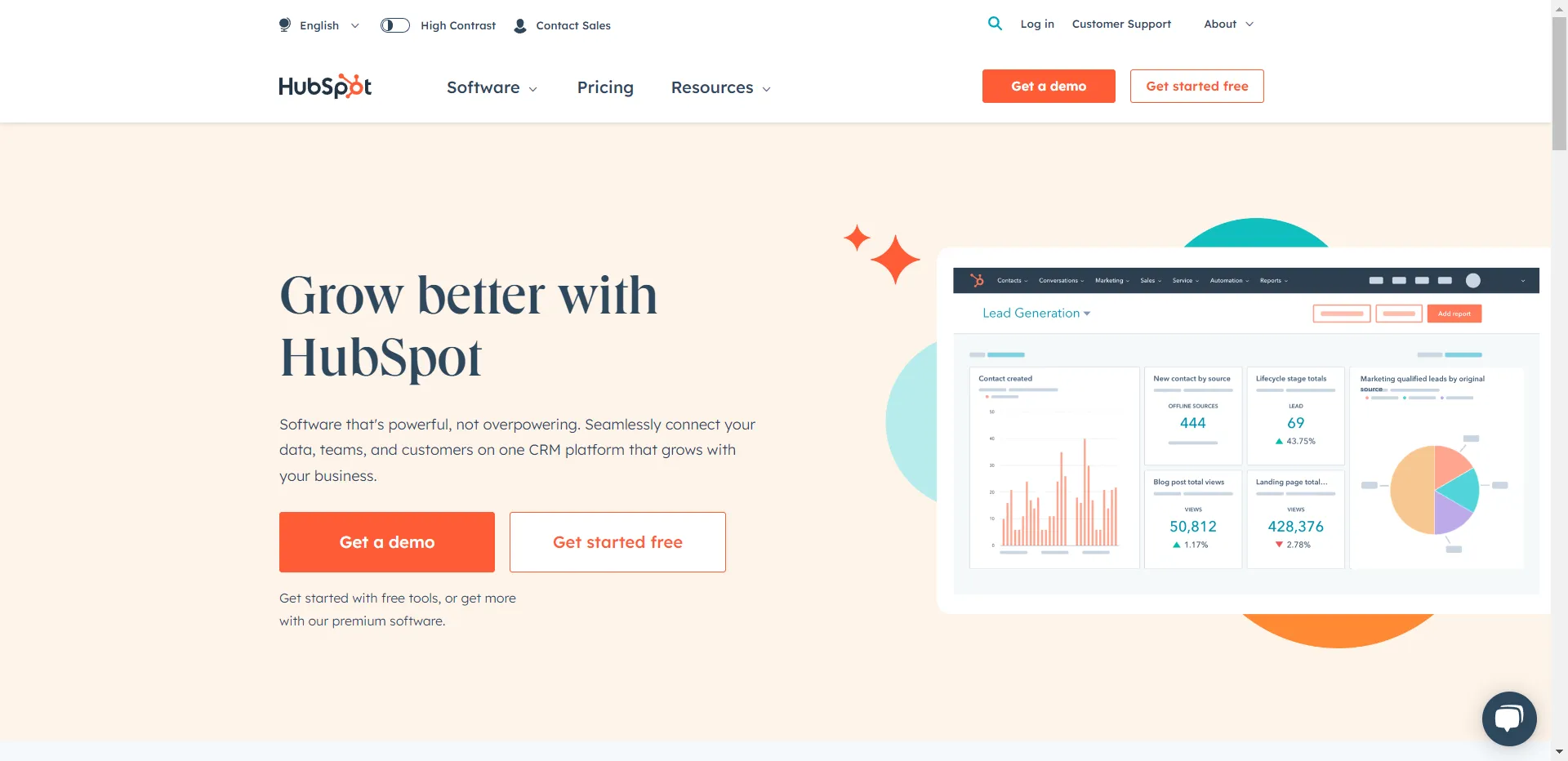
HubSpot’s marketing automation platform helps businesses increase their leads, conversions, and ROI. The tool is an integrated platform that combines all the tools and features a business needs to create a successful marketing campaign. It includes email drip campaigns, advanced segmentation logic, analytics, and A/B testing. It also includes CRM integration and automation tools to help streamline processes and reduce costs. With HubSpot’s marketing automation, businesses can create targeted campaigns tailored to each customer’s needs and preferences. This allows them to deliver more personalized experiences and generate better results.
b. EngageBay
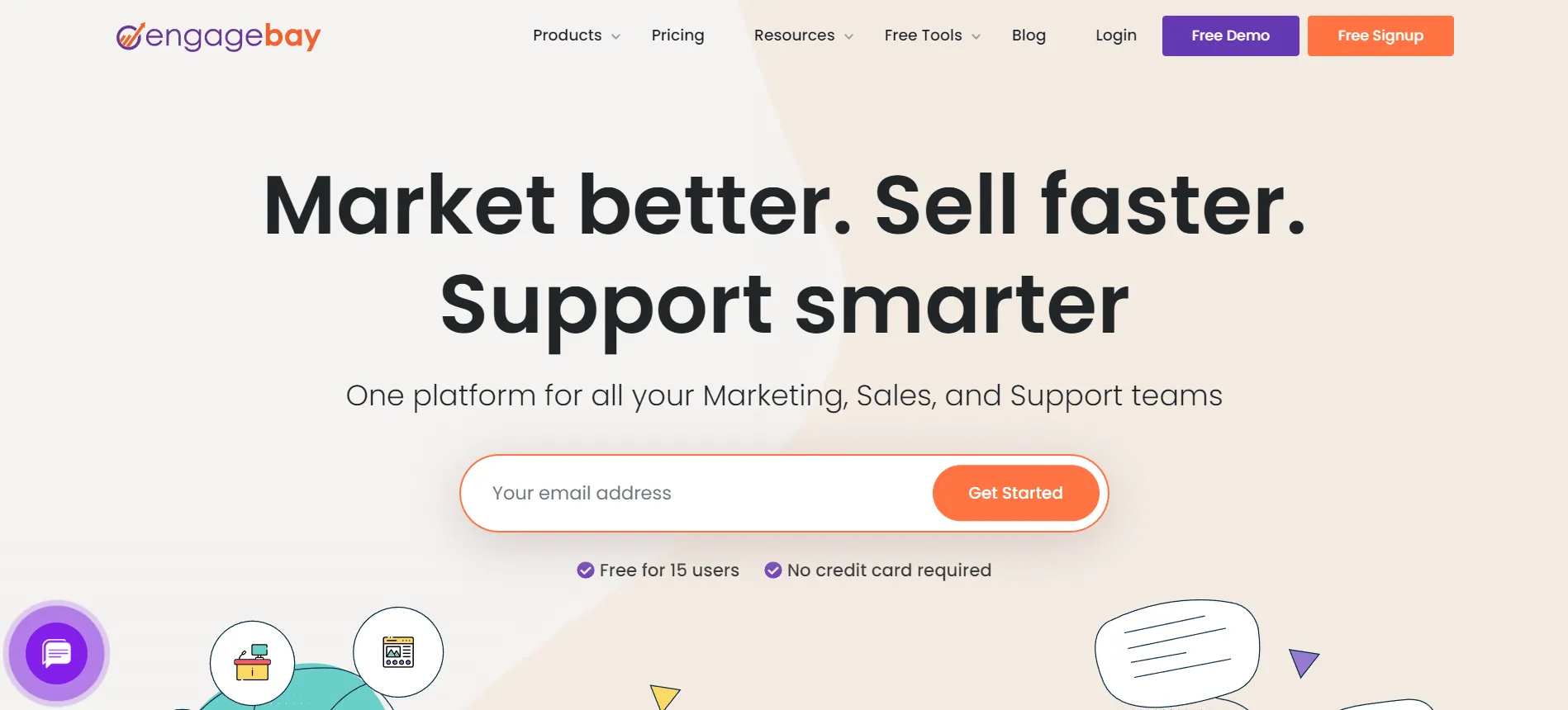
EngageBay is a powerful marketing automation tool that streamlines and automates your marketing processes. It allows you to create campaigns, track results, and optimize your marketing efforts. With EngageBay, you can create automated email campaigns to reach out to customers and prospects. You can also set up automated social media campaigns to increase your reach. EngageBay’s analytics feature also offers potent insights into your marketing performance so you can make more informed decisions. Overall, EngageBay is an easy-to-use tool that can help you maximize your marketing efforts and get more out of your campaigns.
5. Social Media Management Software
a. Buffer
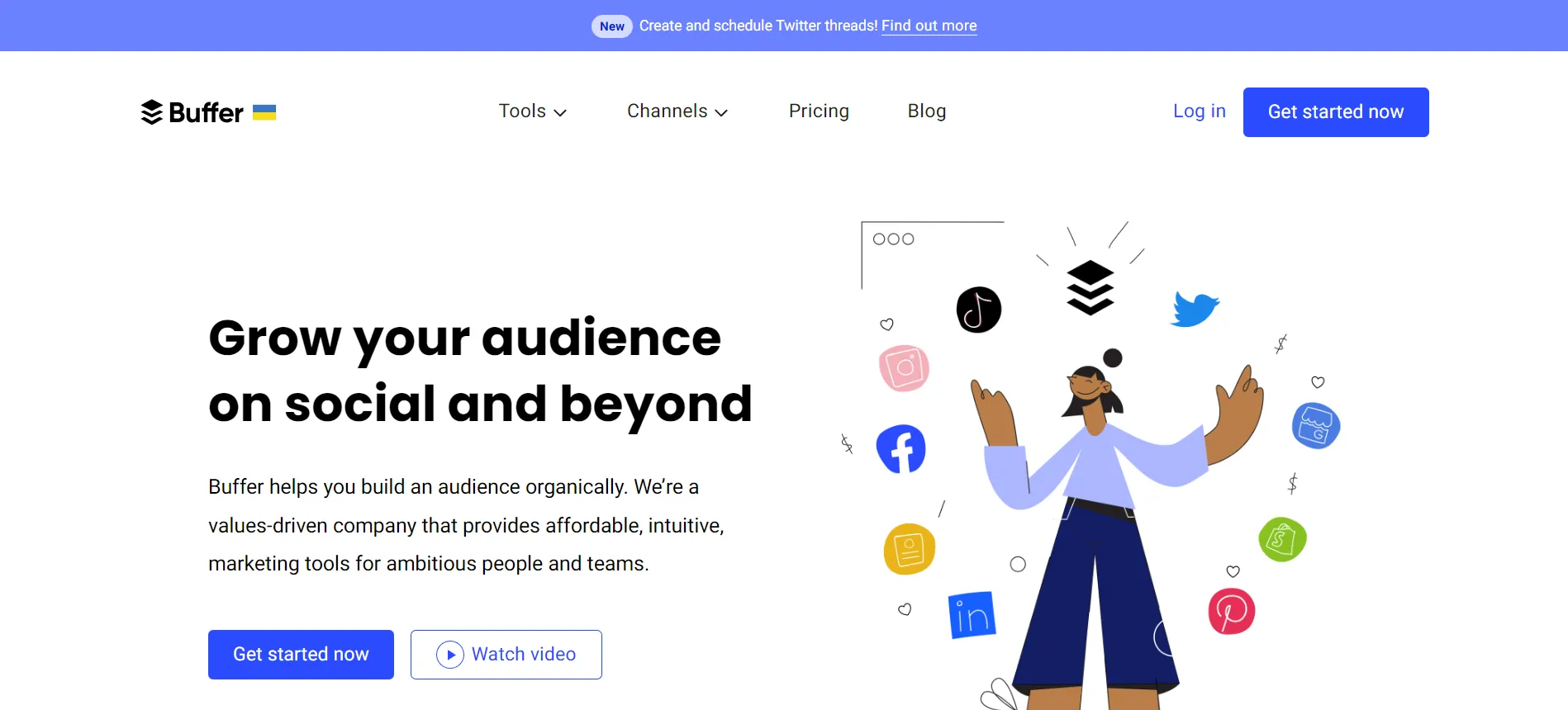
Buffer is a tool designed to help with social media management. It allows users to create and schedule posts on multiple social media platforms. With Buffer, you can create and store content on the platform and then schedule it to post it at specific times throughout the day. You can also use the tool to measure the performance of your posts and track engagement with your followers. Buffer also offers analytics that can help you better understand your audience and optimize your content for maximum reach. All of these features make Buffer an invaluable tool for anyone looking to manage their social media accounts more effectively.
b. Sprout Social
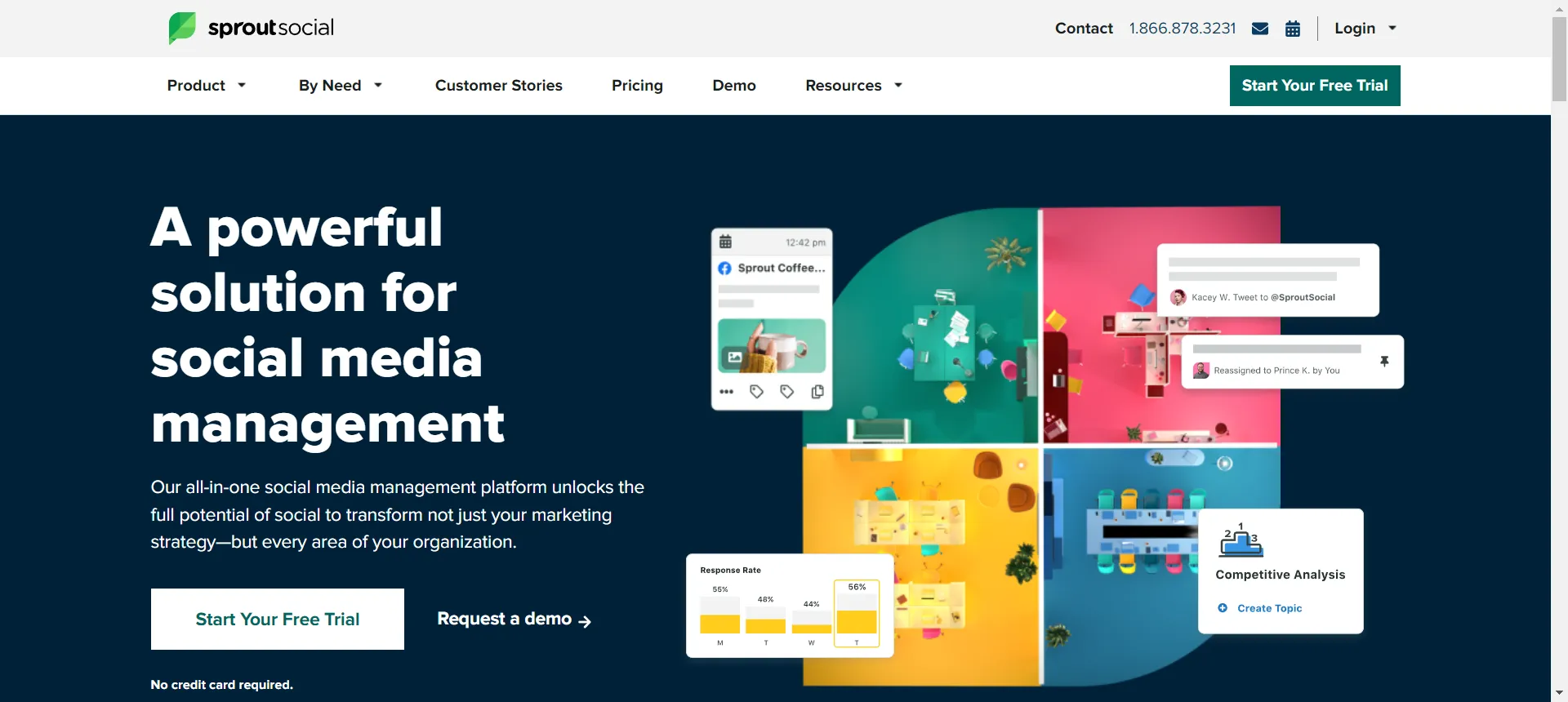
Sprout Social is a social media management tool designed to help businesses and organizations manage their social media presence. It provides users with tools to help plan, schedule, publish, monitor, analyze and engage with their audiences across multiple channels. With Sprout Social, businesses can quickly and easily create content for multiple social networks, including Facebook, Twitter, Instagram, and LinkedIn. They can also use the tool to monitor their brand’s performance and track mentions and interactions on social media. Additionally, Sprout Social provides powerful analytics and reporting tools that enable users to gain insights into their followers, measure campaign performance and optimize their social media efforts.
6. Marketing Analytics Tools
a. Google Analytics
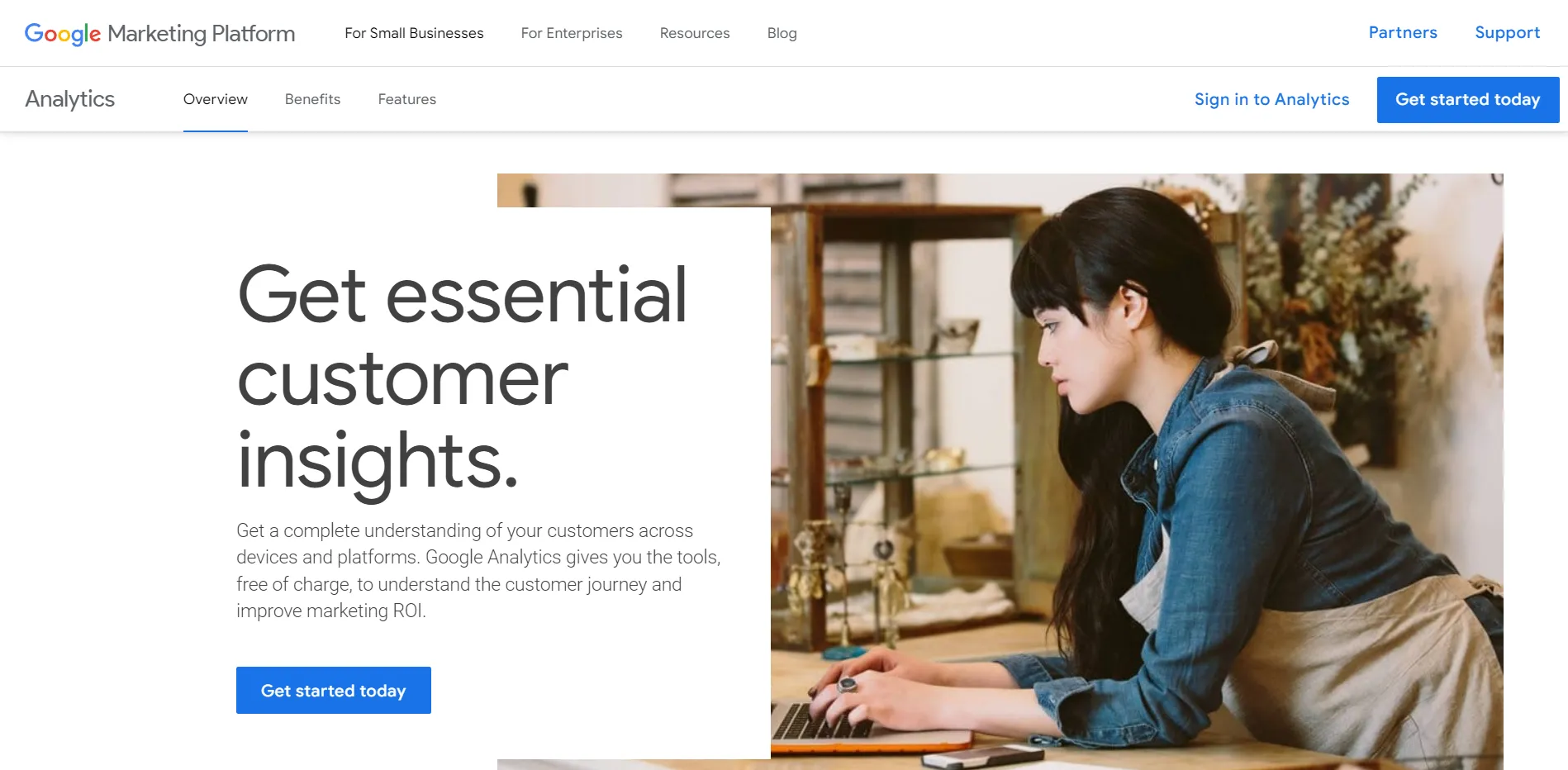
Google Analytics is a powerful tool used to track and analyze website traffic. It can provide valuable insights into who is visiting your website, what they are doing there, and how they got there in the first place. With this information, you can make informed decisions about how to improve your website’s performance. The tool can track page views, the time spent on pages, and visitors’ geographic locations. It can also measure user engagement by tracking conversions and goals, such as sign-ups or purchases. With this data, you can create reports to understand your users better and identify areas of improvement. Therefore, it is an invaluable tool for anyone looking to maximize the success of their website.
b. Heap Analytics
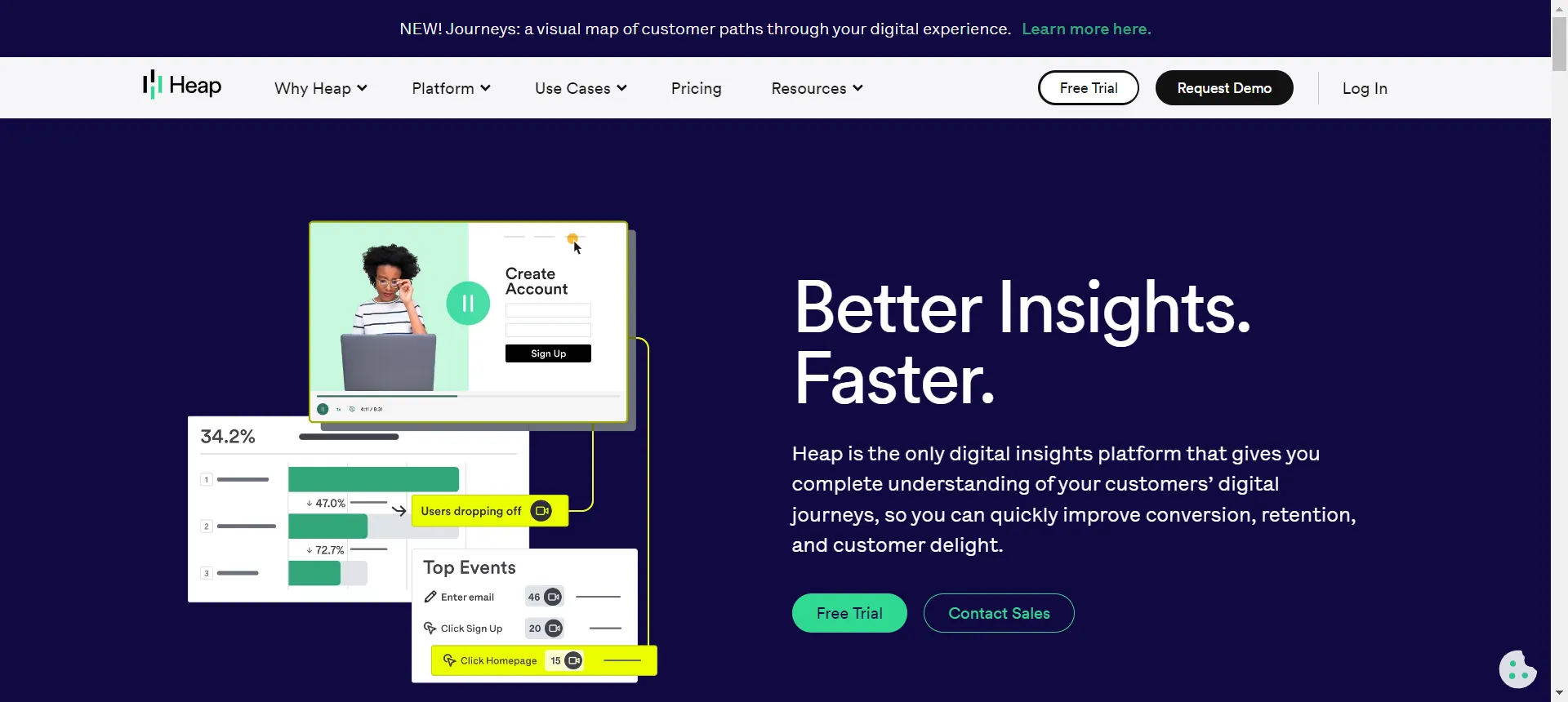
Heap Analytics is a powerful tool that helps businesses track and analyze customer data. It provides a comprehensive view of how users interact with apps and websites, capturing data on everything from page views and clicks to form submissions and purchases. The tool also allows businesses to create custom events to track user behavior in real time. You can use this data to gain valuable insights into customer behavior, allowing businesses to optimize their user experience and increase conversions.
With this we come to an end to our B2B marketing guide.
Start Marketing The Right Way With Our B2B Marketing Guide
You have seen how important it is to have a solid marketing strategy in place. However, it can be difficult to know where to start with so many different marketing ideas and tactics.
This comprehensive B2B marketing guide covers everything from planning your marketing strategy to using the right tools. You now have the insights and advice you need for some savvy B2B marketing. When you start achieving your marketing goals, don’t forget to thank us, as it will give us immense pleasure.
FAQs
B2B marketing helps build relationships with potential customers and create trust in your brand. It can also help you reach a wider range of potential customers by connecting you with industry thought leaders. You can expand into new markets & make connections with decision-makers too.
CRM helps businesses maintain relationships with current & potential customers, & provides a comprehensive view of the customer’s journey. With CRM, you can track customer interactions, from initial contact to purchase & beyond.
Lead generation involves finding & connecting with potential customers. The goal of digital marketing lead generation is to create interest in brand’s products or services & to qualify potential buyers. This involves identifying target audiences, researching their needs & creating content that meets those needs.
